M.R. AQUATECH stands as a beacon of innovation and reliability in the realm of FRP (Fiber Reinforced Plastic) products, particularly catering to the aquaculture industry. Renowned for their meticulous craftsmanship and commitment to quality, M.R. AQUATECH has earned its reputation as a trusted manufacturer of FRP Carp Hatchery, FRP Ornamental Tanks, FRP Coracles, FRP HDPE Pen Culture systems, Fish Casting Nets, and FRP Boats, serving prestigious institutions such as ICAR-CIFA, ICAR-CIFRI, and ICAR-NBFGR under the Government of India.
1. Innovative Solutions: M.R. AQUATECH demonstrates a remarkable aptitude for innovation, consistently introducing cutting-edge solutions to meet the evolving needs of the aquaculture sector. Their FRP products represent the fusion of advanced technology and traditional craftsmanship, ensuring durability and efficiency in every aspect.


2. Reliability: Customers place their trust in M.R. AQUATECH due to their unwavering commitment to reliability. Each product undergoes stringent quality checks to guarantee optimal performance, longevity, and safety. This commitment to reliability has established M.R. AQUATECH as a preferred partner for various governmental and institutional projects.
3. Customization: Recognizing the diverse requirements of their clientele, M.R. AQUATECH offers customizable solutions tailored to specific needs. Whether it's designing FRP Carp Hatcheries or crafting Ornamental Tanks of varying sizes and specifications, their adept team ensures that each product aligns perfectly with the customer's vision and operational requirements.
4. Sustainability: In an era where environmental consciousness is paramount, M.R. AQUATECH sets itself apart by prioritizing sustainability in its manufacturing processes. FRP, being inherently eco-friendly, reduces the carbon footprint associated with traditional materials while offering superior durability and resistance to corrosion, thereby contributing to the conservation of natural resources.
5. Collaborative Partnerships: M.R. AQUATECH's collaborations with prestigious government institutions like ICAR-CIFA, ICAR-CIFRI, and ICAR-NBFGR reflect their esteemed status in the industry. Through these partnerships, they contribute significantly to the advancement of aquaculture research and development in India, playing a pivotal role in fostering innovation and growth in the sector.
6. Exceptional Service: Beyond delivering top-notch products, M.R. AQUATECH prides itself on providing exceptional customer service. From project conceptualization to installation and maintenance, their team remains dedicated to ensuring a seamless and gratifying experience for their clients, fostering long-term relationships built on trust and mutual respect.
In essence, M.R. AQUATECH stands as a beacon of excellence in the manufacturing of FRP aquaculture products, embodying the virtues of innovation, reliability, sustainability, and customer-centricity. Their contributions to the industry not only elevate standards but also drive positive change, laying the foundation for a thriving and sustainable aquaculture ecosystem in India.
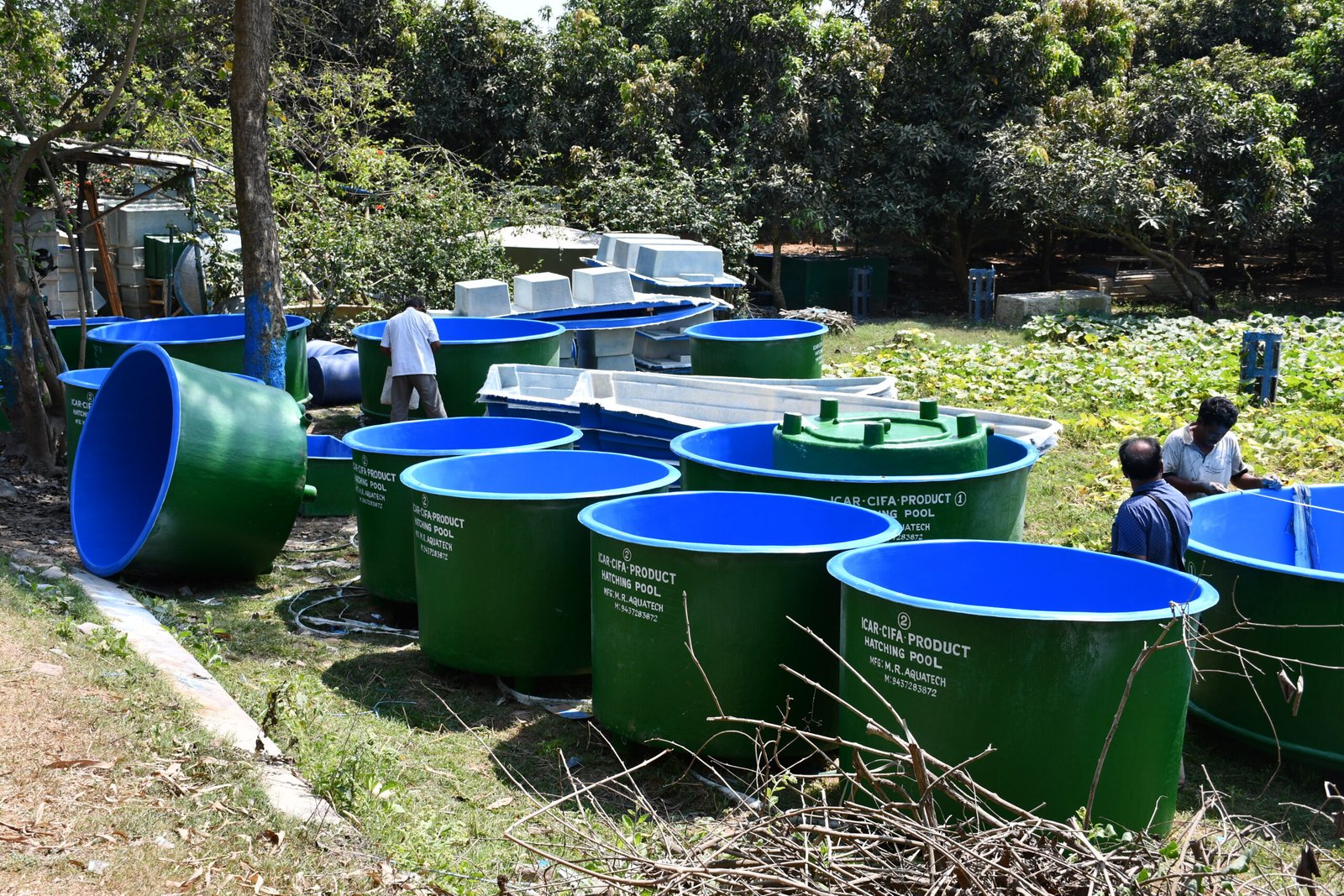
The success over decades
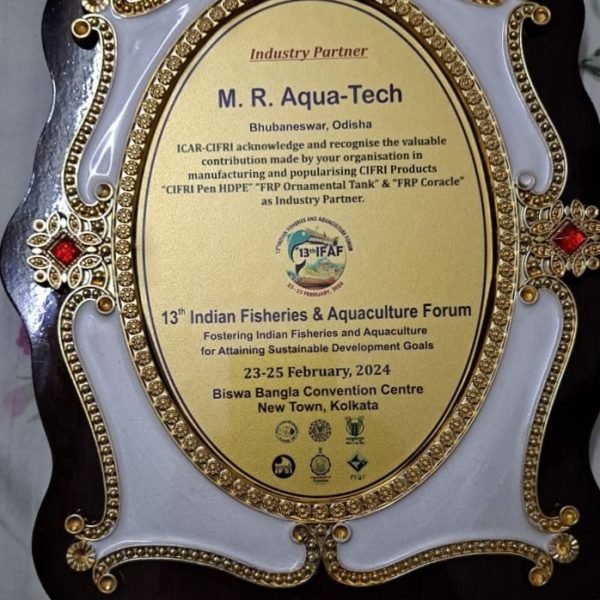
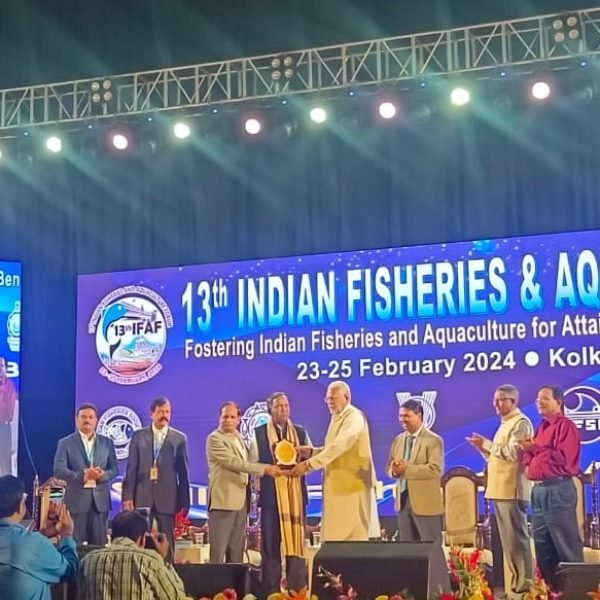
Prized for one of the best FRP product manufacturer & supplier from west side of INDIA in the 13th IFAF, 2024 Held At Biswa Bangla Convention Centre, Kolkata.
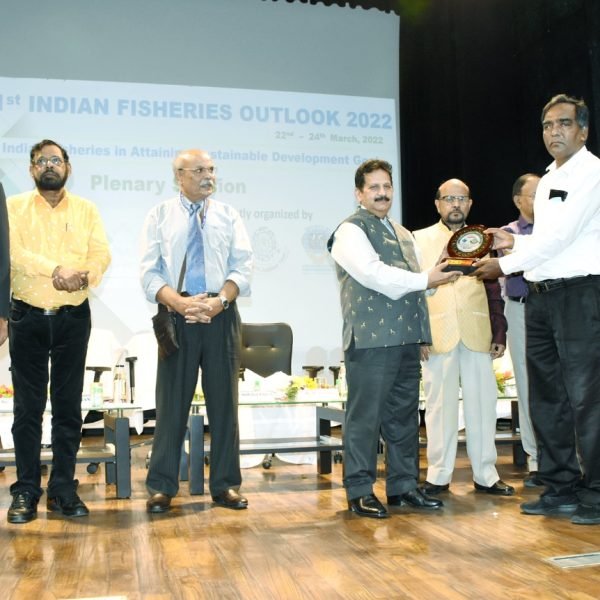
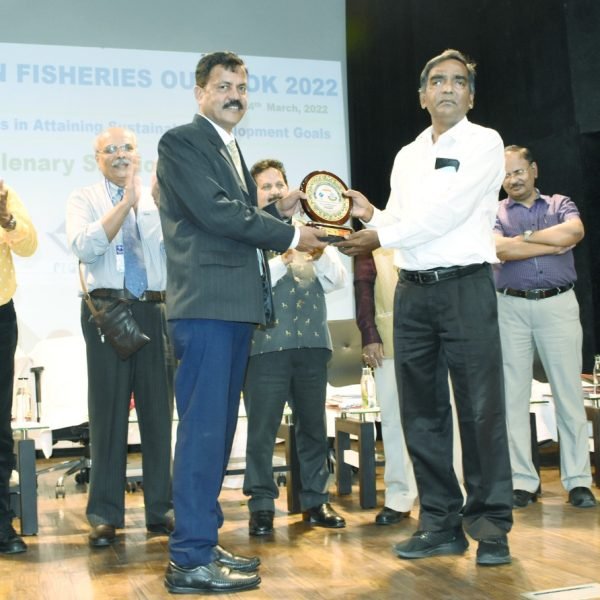
Prized for being the best of exhibit stall in the trade fair of 1st Indian fisheries outlook 2022 at Barrack pore, west Bengal.
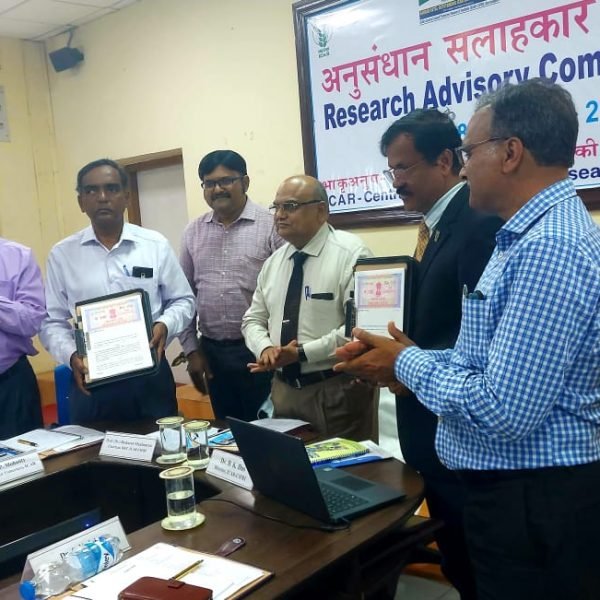

Thankful for being a registered official manufacture dealer of the Indian Council of Agricultural Research - Central Inland Fisheries Research Institute, located in West Bengal, India.
Those Inspirable Histories
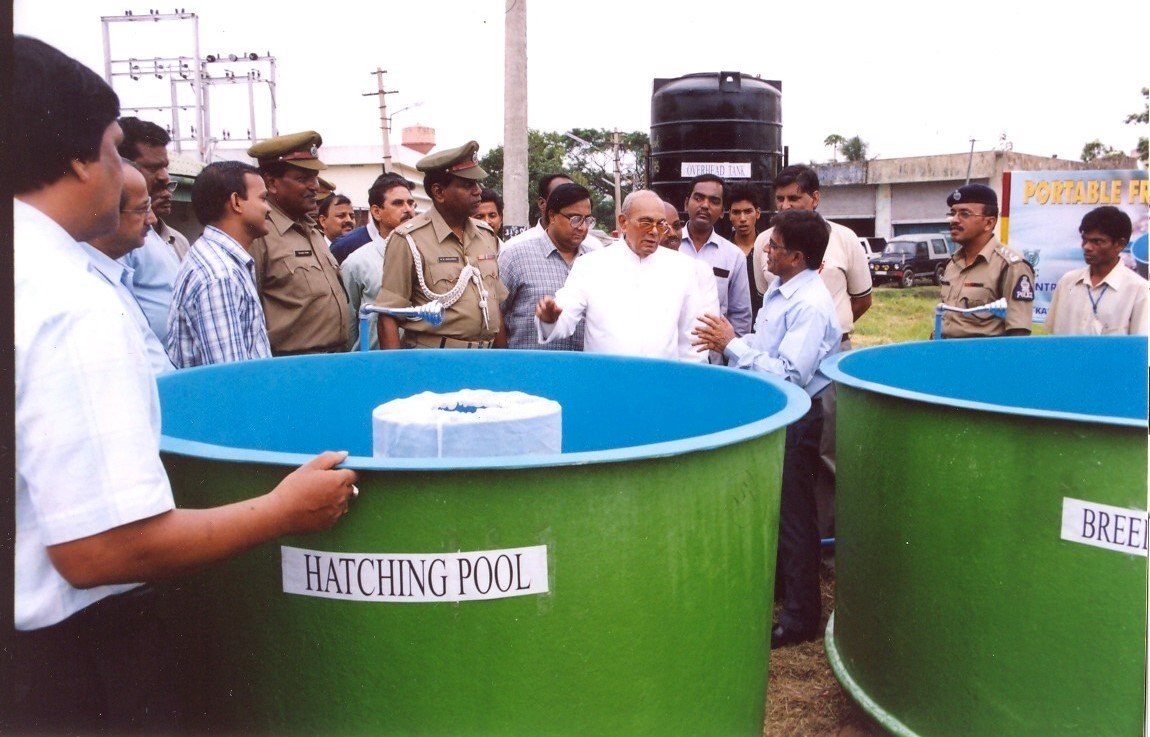
His Excellency the Governor of Odisha, Shri Rameshwar Thakur on 14th July 2006 at CIFA, Bhubaneswar, released the FRP Carp Hatchery Technology.
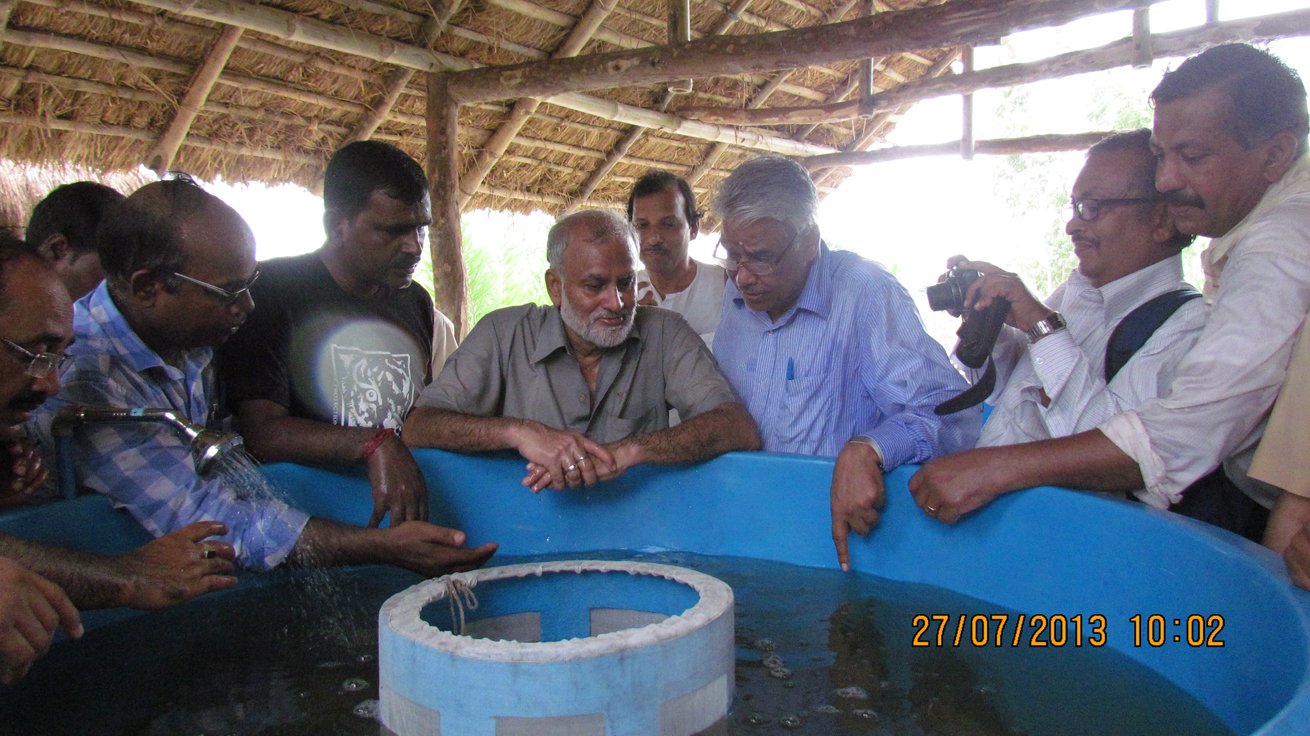
Hon’ble Secretary, DARE & DG, ICAR Dr S. Ayyappan viewing the FRP carp hatchery operation at Sunderban, West Bengal
As an authorized government partner
There are several ICAR (Indian Council of Agricultural Research) institutes and research centers across India, each focusing on various aspects of agricultural research and development. While I don't have an exact count, there are numerous ICAR institutes covering different fields such as crop sciences, horticulture, animal sciences, agricultural engineering, fisheries, and more. These institutes play a crucial role in advancing agricultural practices, enhancing productivity, ensuring food security, and promoting sustainable agricultural development in India. The exact number may vary due to the establishment of new institutes or changes in organizational structures, so it's advisable to check the latest information from the ICAR website or relevant government sources for the most accurate count.
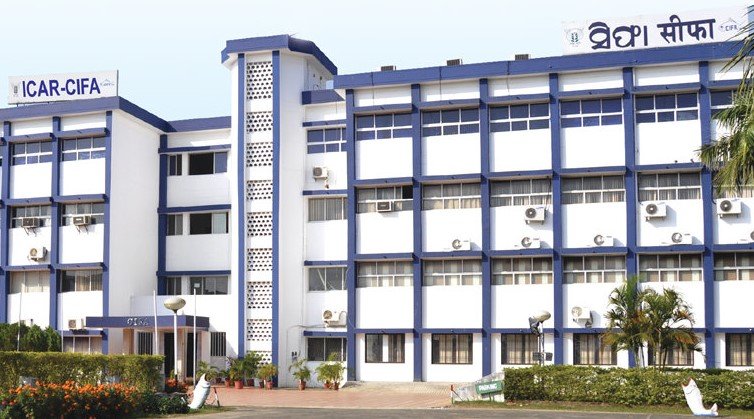
ICAR-CIFA
ICAR-CIFA stands for the Indian Council of Agricultural Research - Central Institute of Freshwater Aquaculture. It is an institute located in Bhubaneswar, Odisha, India. ICAR-CIFA is dedicated to research and development in the field of freshwater aquaculture. ICAR-CIFA plays a significant role in the development of aquaculture technologies, particularly those relevant to the needs of Indian farmers and the aquaculture industry. It collaborates with national and international research organizations, universities, and industry partners to achieve its objectives.
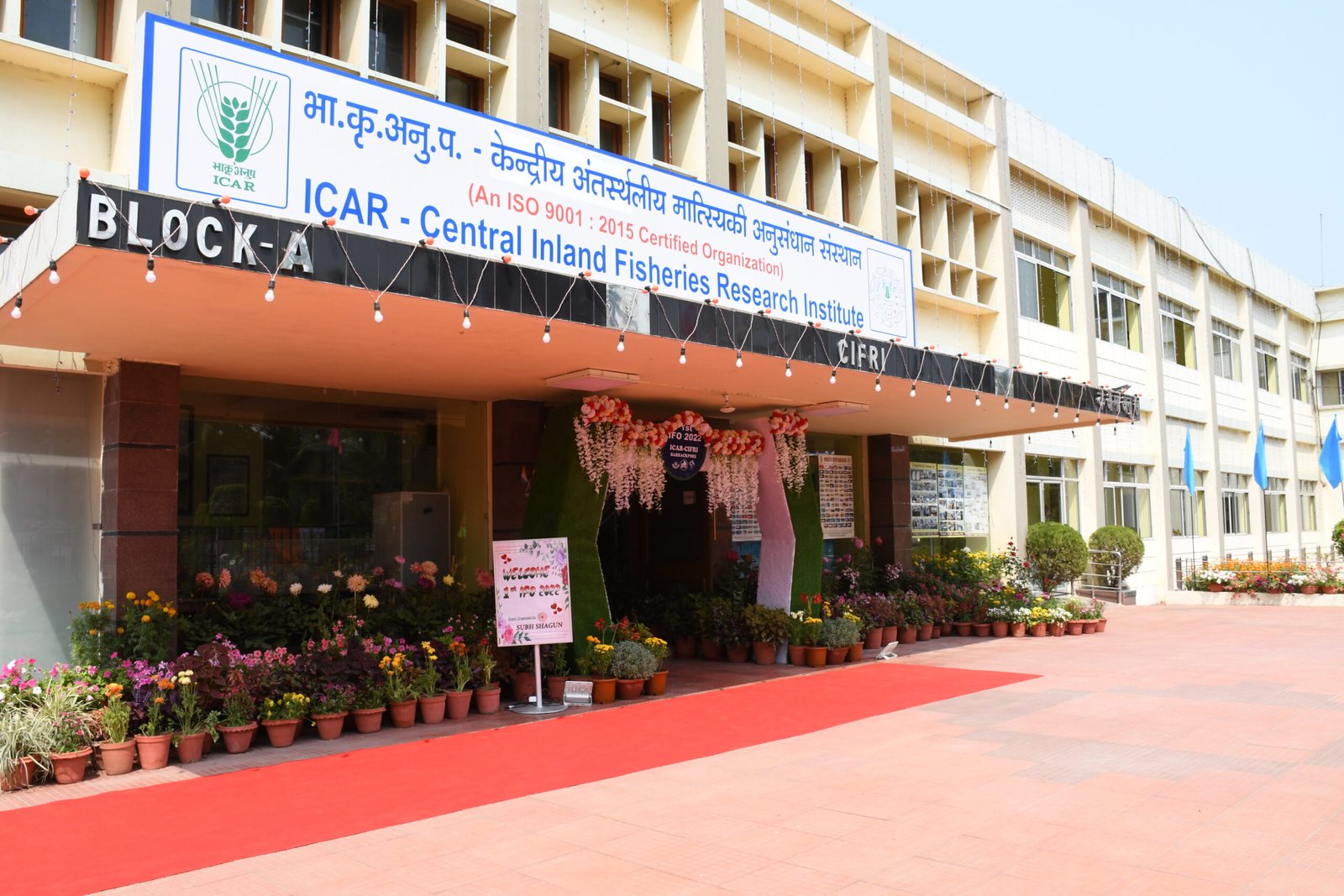
ICAR-CIFRI
ICAR-CIFRI stands for the Indian Council of Agricultural Research - Central Inland Fisheries Research Institute, located in West Bengal, India. It is a premier research institute dedicated to the development and promotion of inland fisheries and aquaculture in India. ICAR-CIFRI conducts research on various aspects of inland fisheries, including fish breeding, culture practices, fish health management, conservation of indigenous fish species, and sustainable aquaculture techniques. The institute also provides training and extension services to fish farmers and stakeholders in the fisheries sector.

ICAR-NBFGR
ICAR-NBFGR stands for the Indian Council of Agricultural Research - National Bureau of Fish Genetic Resources. It is an institute based in Lucknow, India, dedicated to research and development in the field of fish genetic resources. The primary focus of ICAR-NBFGR is the conservation, characterization, and sustainable utilization of fish genetic resources for the benefit of aquaculture and fisheries sectors in India.
For last 20 years M.R. AQUATECH Manufactured carp hatchery - as per the Technology of CIFA, CIFRI, NBFGR Government of India.
(a) ICAR - CIFA Portable Carp Hatchery: The technology was acquired from ICAR - CIFA through commercialization process. This technology helps in producing fish seed for the fish farmers. Till now provided more than 500 carp hatcheries throughout India benefitting more that 2.0 lakh fish farmers and generating employment for 500 entrepreneurs.
b) ICAR CIFRI Cage Grow Feed: This technology was procured from ICAR - CIFRI and provided feed to Assam, Manipur, Odisha, West Bengal, Jharkhand and Chhattisgarh fish farmers and fishers. Till date more than 600 ton fish feed were supplied to the fish farmers, which has helped in production enhancement from the unit area of fish farming.
(c) ICAR - CIFRI HDPE Pen: This technology was acquired from ICAR CIFRI and provided the technology to West Bengal, Odisha, Jharkhand, Chhattisgarh, Assam and Manipur. This technology has been created for in-situ rising of fish seed in the pen to reduce the cost of investment and increase the production from inland water bodies. The technology has helped more than 100 nos of fisheries co-operative societies in the above-mentioned states to reduce their seed production cost and increase their production from inland water bodies.
(d) ICAR-NBFGR Ornamental Tank: this technology was required from ICAR-NBFGR and provided the technology too many places of UP, It features a well-designed filtration system to maintain water quality, ensuring the health and vitality of the ornamental fish species housed within. Additionally, the tank may incorporate aesthetic elements such as landscaping, lighting, and decorative elements to create a visually appealing environment for both visitors and the fish.
All Our Manufactured products
FRP coracle
An FRP coracle is a type of traditional watercraft, typically used in regions like India and parts of Southeast Asia. Traditionally, coracles were made from materials like woven bamboo or animal hides stretched over a lightweight frame. However, modern versions are constructed using Fiberglass Reinforced Plastic (FRP) for enhanced durability and longevity.
FRP coracles offer several advantages over traditional ones:
1.Durability: FRP is known for its strength and resistance to corrosion, making FRP coracles more durable and longer-lasting compared to those made from natural materials.

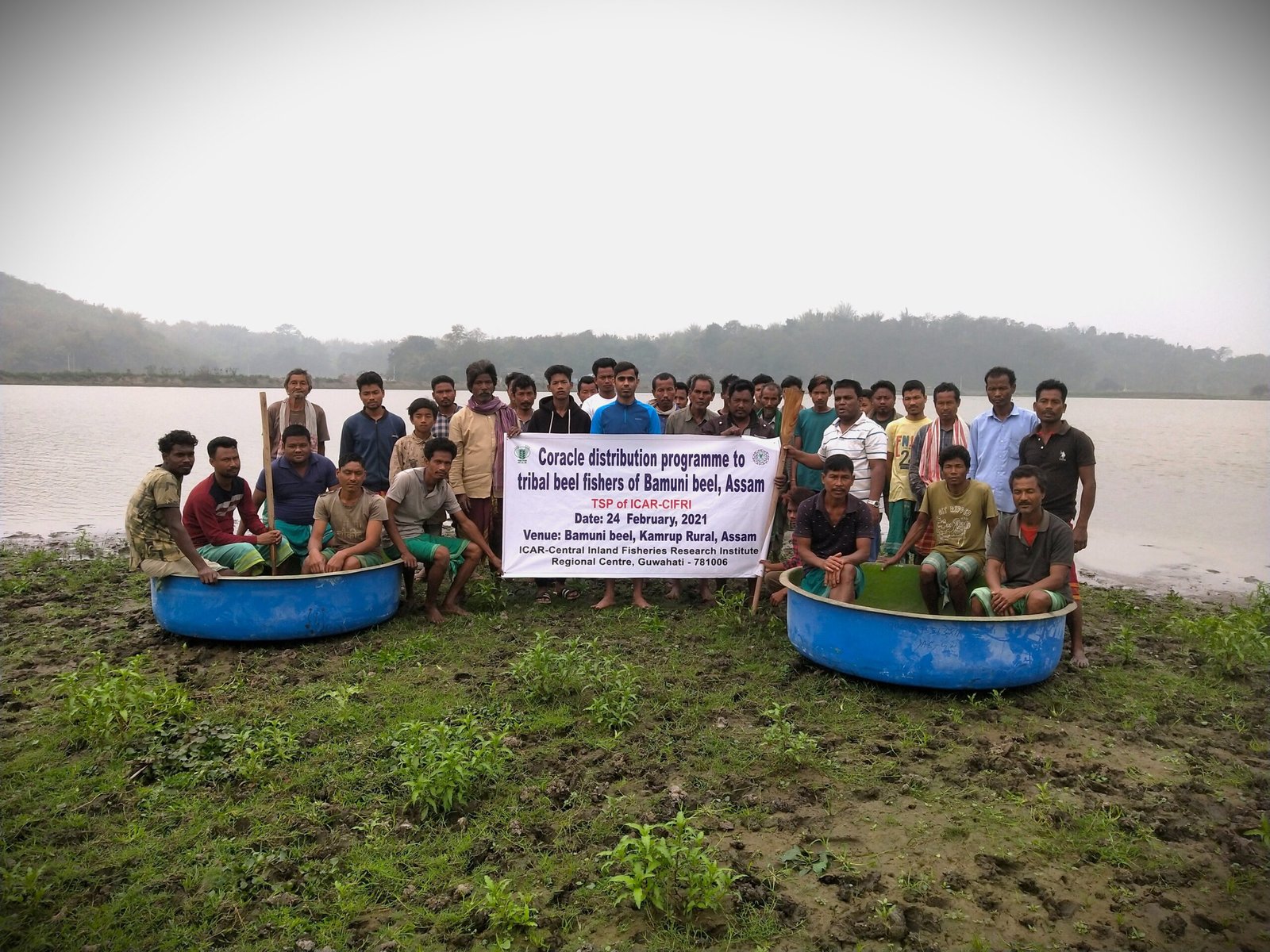
2. Lightweight: Despite their durability, FRP coracles remain lightweight, which is essential for ease of transportation and maneuverability on water.
3. Low Maintenance: FRP requires minimal maintenance compared to natural materials, reducing the need for frequent repairs and upkeep.
4.Customization: FRP coracles can be designed and manufactured in various shapes and sizes to suit specific requirements or preferences.
5.Safety: The sturdy construction of FRP coracles enhances safety for users, particularly in rough water conditions.
FRP coracles are still used for fishing, transportation, and recreational purposes in regions where traditional watercraft are prevalent. The adoption of FRP materials in coracle construction has helped to preserve this traditional craft while improving its performance and longevity.
FRP Carp Hatchery
The use of Fiberglass Reinforced Plastic (FRP) in carp hatcheries offers several advantages for carp seed production and, consequently, for farmers:
1. Portability and Ease of Installation: FRP hatcheries are lightweight and can be transported easily, making them suitable for deployment in remote areas where traditional hatcheries might be impractical or inaccessible. This facilitates the establishment of hatcheries closer to the demand centers, reducing transportation costs and ensuring timely availability of carp seeds.
2. Operational Efficiency: FRP hatcheries are designed for efficient operation, allowing for the production of significant quantities of carp seeds in one operation. This operational efficiency translates into higher yields, providing farmers with a consistent supply of fish seeds for stocking their ponds.
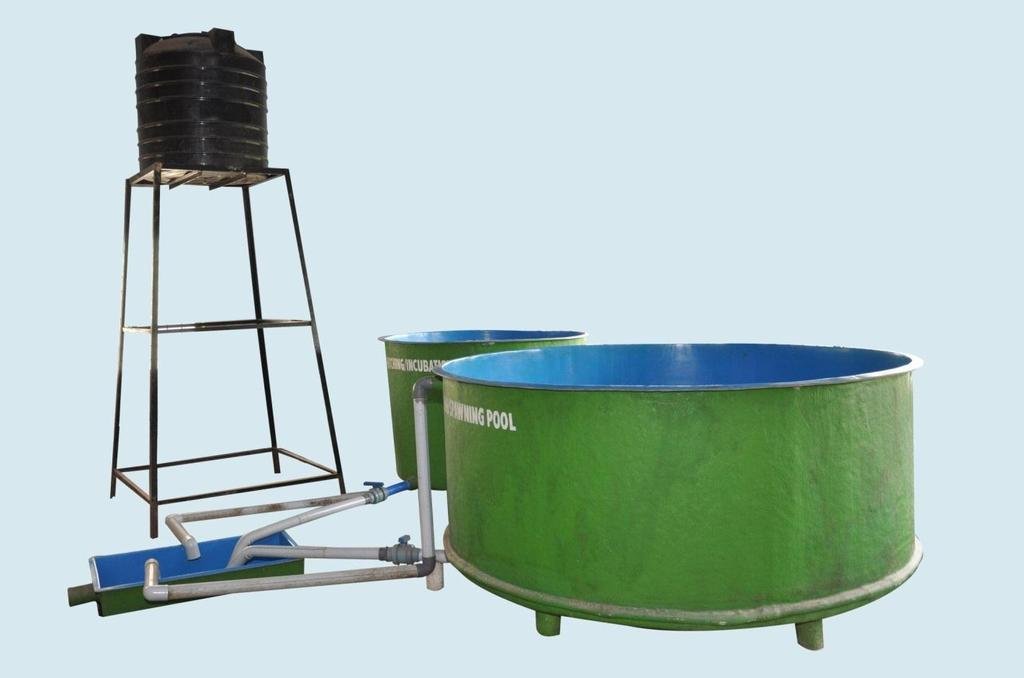

3. Bio-diversity Conservation: By facilitating the breeding of carp in field conditions, FRP hatcheries contribute to biodiversity conservation efforts. Carp species play a crucial role in aquaculture and ecosystem management, and ensuring their availability through controlled breeding helps maintain ecological balance in aquatic environments.
4. Cost-effectiveness: Compared to traditional hatcheries, FRP hatcheries may offer cost advantages in terms of initial setup, maintenance, and operational expenses. Their durability and resistance to corrosion make them a long-term investment for fish farmers, potentially reducing overall production costs.
5. Scalability: FRP hatcheries can be scaled up or down according to the specific needs of fish farmers. This scalability allows for flexibility in production levels, enabling farmers to adapt to changing market demands and environmental conditions.
Overall, the use of FRP hatcheries represents a sustainable and efficient approach to carp seed production, offering numerous benefits for farmers, biodiversity conservation, and the aquaculture industry as a whole.
FRP ornamental fish tank
FRP ornamental fish tanks are specialized aquariums made from Fiberglass Reinforced Plastic (FRP). These tanks are designed specifically for keeping and displaying ornamental fish, such as tropical freshwater fish or marine fish, in both residential and commercial settings. Here are some key points about FRP ornamental fish tanks:
1. Material FRP tanks are constructed using layers of fiberglass cloth impregnated with polyester or epoxy resin. This combination creates a strong, lightweight, and durable tank structure that is resistant to corrosion, making it suitable for both freshwater and saltwater environments.
2. Design: FRP ornamental fish tanks come in a variety of shapes, sizes, and designs to suit different preferences and requirements. They can be rectangular, cylindrical, bow-fronted, or custom-designed to fit specific spaces or aesthetic preferences. Some FRP tanks also feature built-in filtration systems, lighting, and other accessories to create a complete aquatic environment for fish and aquatic plants.
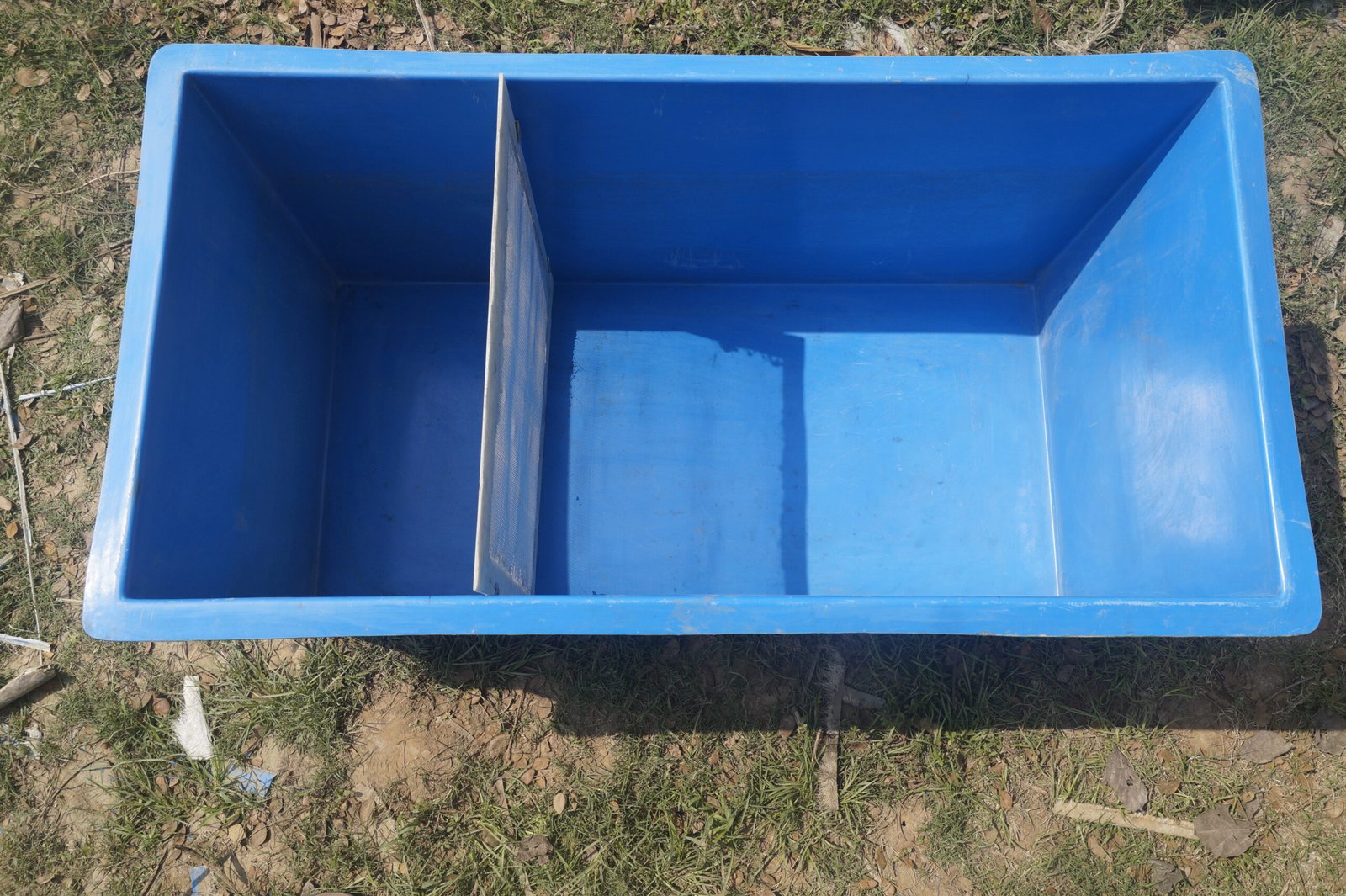
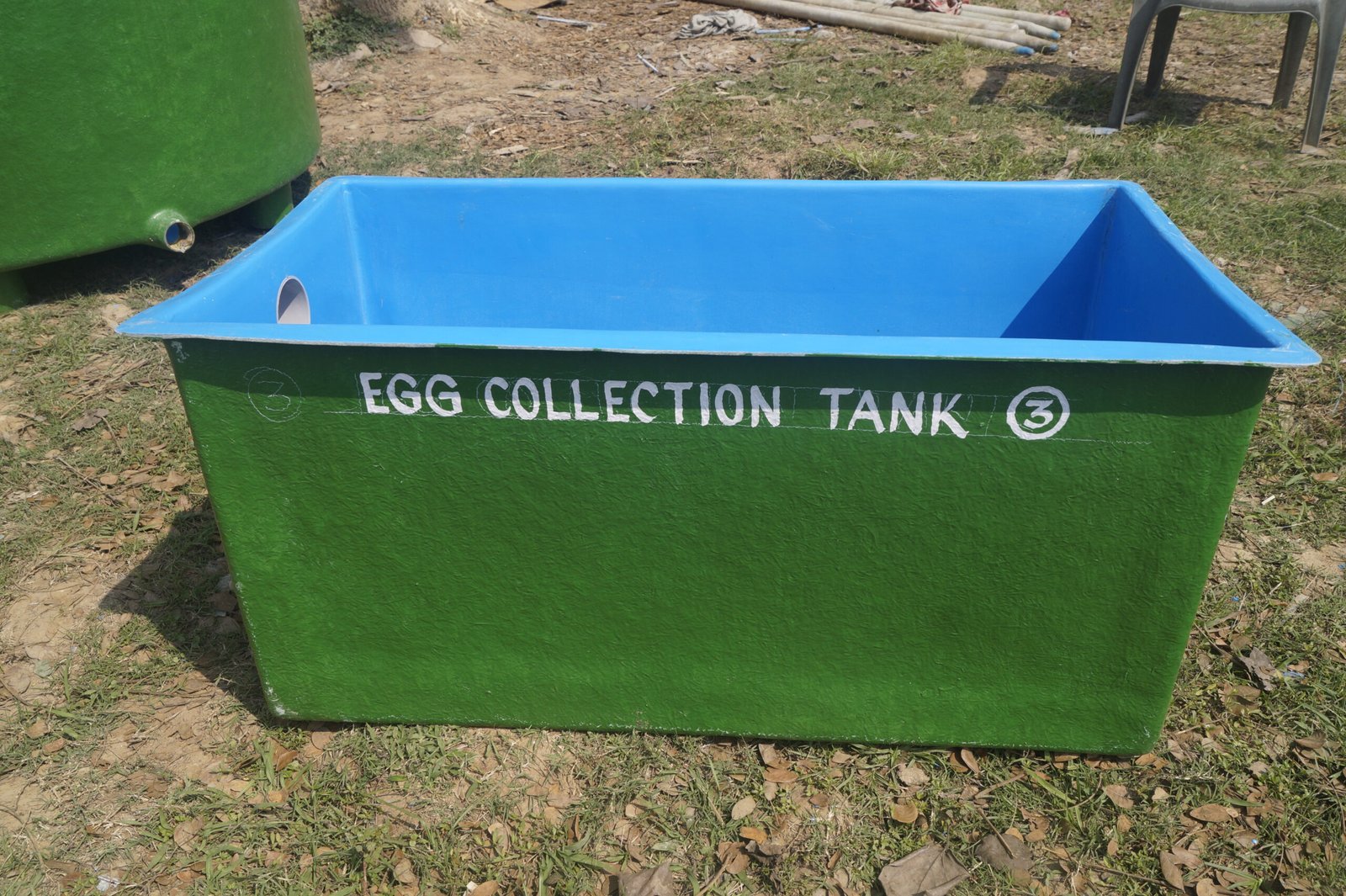
3. Customization: One advantage of FRP tanks is their versatility in terms of customization. They can be manufactured to virtually any size or shape, allowing for the creation of large-scale display tanks or smaller, more specialized setups. Custom features such as integrated viewing windows, decorative elements, or unique color finishes can also be incorporated to enhance the aesthetic appeal of the tank.
4. Durability: FRP tanks are highly durable and resistant to cracking, leaking, and damage from water exposure. Unlike glass aquariums, which can be prone to breakage if mishandled, FRP tanks are less fragile and can withstand more wear and tear over time. This durability makes FRP tanks a reliable choice for long-term use in both residential and commercial settings.
5. Maintenance: FRP tanks typically require minimal maintenance compared to glass or acrylic aquariums. The smooth, non-porous surface of fiberglass makes cleaning and algae removal easier, while the material itself is resistant to stains and discoloration. Regular water changes, filter maintenance, and monitoring of water parameters are still necessary to ensure optimal water quality and fish health.
Overall, FRP ornamental fish tanks offer a combination of durability, versatility, and customization options that make them a popular choice among fish enthusiasts and aquarium hobbyists. Whether used for home aquariums, public displays, or commercial installations, FRP tanks provide a reliable and aesthetically pleasing environment for keeping and showcasing ornamental fish and aquatic life.
HDPE pen culture
HDPE pen culture is a method of fish farming that involves the use of large enclosures made of High-Density Polyethylene (HDPE) material. These enclosures are typically placed in freshwater bodies such as lakes, reservoirs, or large ponds. Here's how the system works and its benefits:
1.Pen Construction: HDPE pens are constructed using durable HDPE material, which is resistant to corrosion and degradation in water. The pens are designed to be sturdy and float on the water surface.
2. Installation: The pens are anchored or tied to the bottom of the water body to prevent them from drifting away. They are usually arranged in rows or grids to maximize space utilization.
3. Stocking: Fish fingerlings or juveniles are stocked inside the pens at appropriate densities. Commonly cultured species include carp species like rohu, catla, and mrigal, as well as tilapia and other freshwater fish species.
4. Feeding: Fish are fed a balanced diet regularly to promote growth. Feeding can be managed more efficiently in pens compared to open water bodies, as it's easier to monitor and control the amount of feed given to the fish.
5. Management: Regular monitoring of water quality parameters such as dissolved oxygen, pH, and temperature is essential to ensure optimal conditions for fish growth. Routine maintenance of pens, including cleaning and repairing any damages, is also necessary.
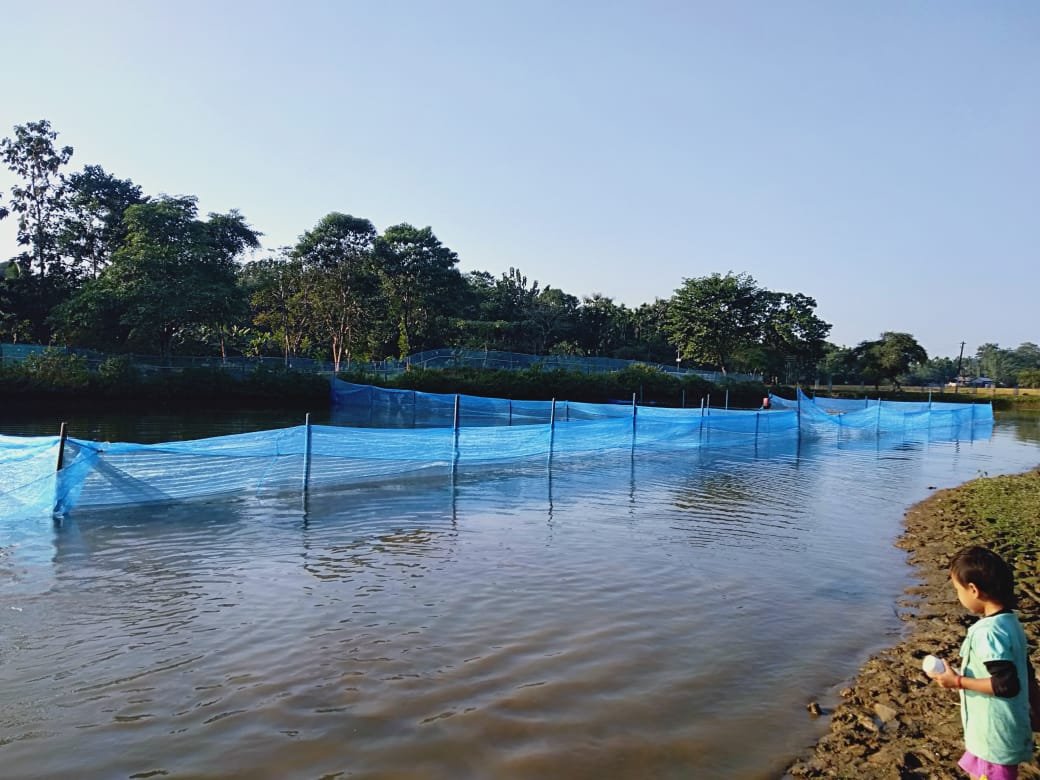
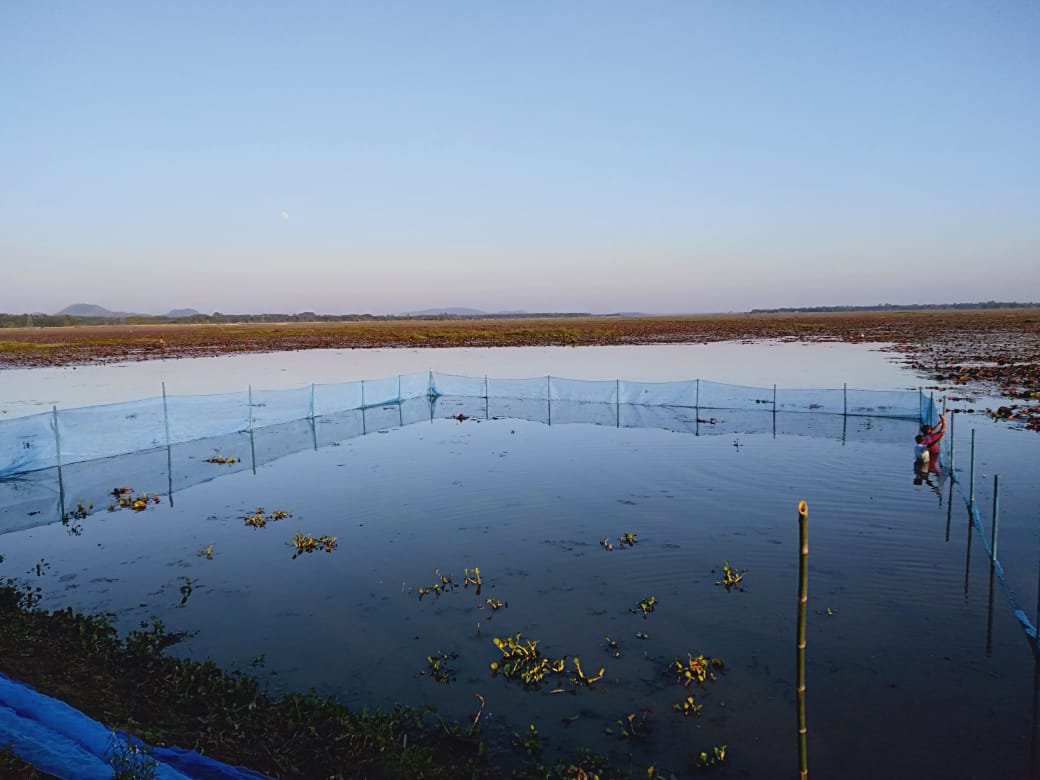
Benefits of CIFRI HDPE Pen Culture:
1. Increased Production: HDPE pen culture allows for higher stocking densities compared to traditional open pond systems, resulting in increased fish production per unit area.
2. Improved Fish Health: The enclosed environment of HDPE pens provides protection from predators and reduces the risk of disease transmission, leading to better fish health and survival rates.
3. Efficient Feeding: Feeding practices can be optimized in pen culture systems, leading to more efficient feed utilization and faster growth rates for the fish.
4. Environmental Sustainability: By intensifying fish production in controlled environments, HDPE pen culture can help reduce pressure on natural fish stocks and ecosystems.
5. Economic Benefits: HDPE pen culture can provide additional income opportunities for fish farmers, as it allows for year-round production and higher marketable yields of fish.
Overall, CIFRI HDPE pen culture offers a sustainable and profitable approach to freshwater aquaculture, benefiting both fish farmers and the environment.
FRP boat
FRP boats, also known as Fiberglass Reinforced Plastic boats, are vessels constructed primarily using fiberglass reinforced plastic materials. Here's what you need to know about them:
1.Construction: FRP boats are built using layers of fiberglass cloth impregnated with polyester or epoxy resin. These materials are then molded into the desired shape using a combination of techniques such as hand layup, vacuum infusion, or resin transfer molding (RTM). The resulting hull is lightweight, strong, and resistant to corrosion.
2. Durability: One of the key advantages of FRP boats is their durability. Fiberglass is highly resistant to rust, rot, and corrosion, making FRP boats suitable for use in both freshwater and saltwater environments. Additionally, fiberglass is not susceptible to osmotic blistering, a common issue with some other boat-building materials.
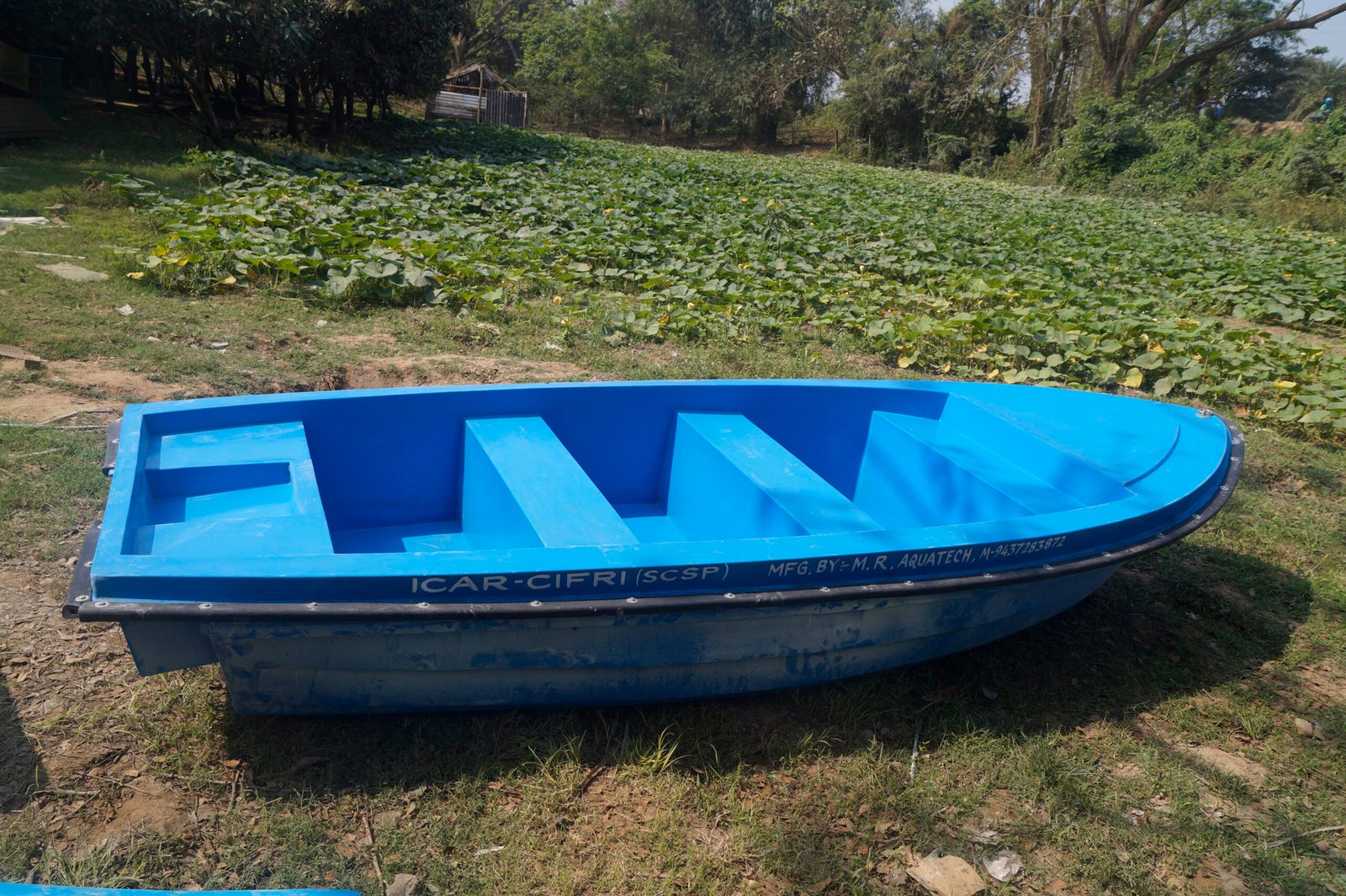
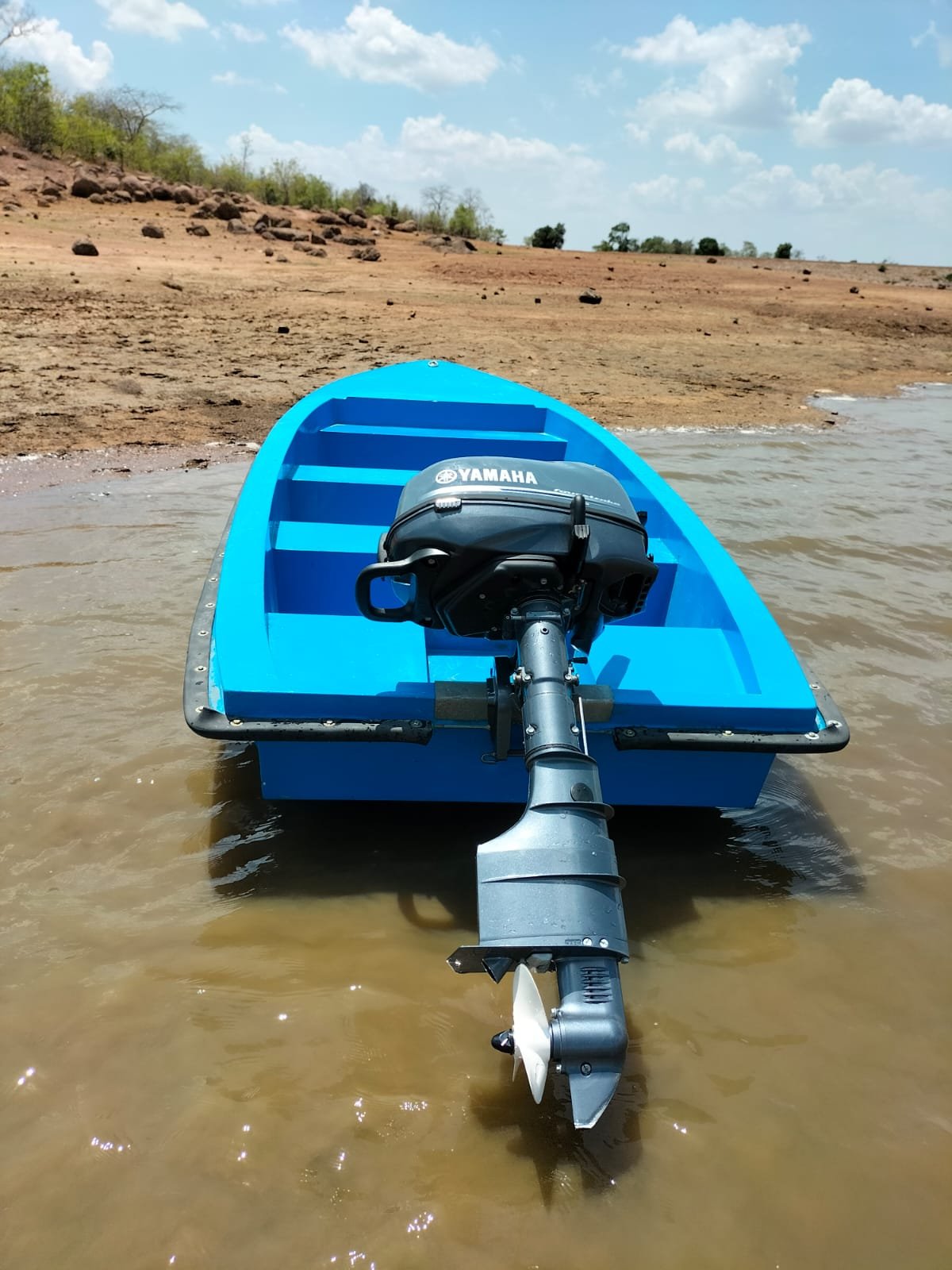
3. Versatility: FRP boats come in a wide range of shapes, sizes, and designs, catering to various purposes such as recreational boating, fishing, sailing, and commercial applications. From small dinghies to large yachts, fiberglass boats are versatile and can be customized to meet specific needs and preferences.
4. Maintenance: FRP boats generally require minimal maintenance compared to boats made from other materials such as wood or aluminum. Periodic cleaning and waxing are usually sufficient to keep the hull in good condition. Any minor damage or scratches can be easily repaired using fiberglass repair kits available on the market.
5.Performance: Fiberglass boats are known for their excellent performance characteristics, including stability, buoyancy, and speed. The smooth hull surface reduces drag, allowing FRP boats to glide through the water with ease. Additionally, fiberglass can be molded into complex shapes, enabling boat designers to optimize performance for different applications.
6.Cost: While initial purchase costs for FRP boats can vary depending on factors such as size, brand, and features, they are generally competitive compared to boats made from alternative materials. Moreover, the long-term durability and relatively low maintenance requirements of fiberglass boats can result in cost savings over the lifespan of the vessel.
Overall, FRP boats offer a compelling combination of durability, versatility, performance, and value, making them a popular choice among boat owners and enthusiasts worldwide.
Accessories needed in time of fish breeding


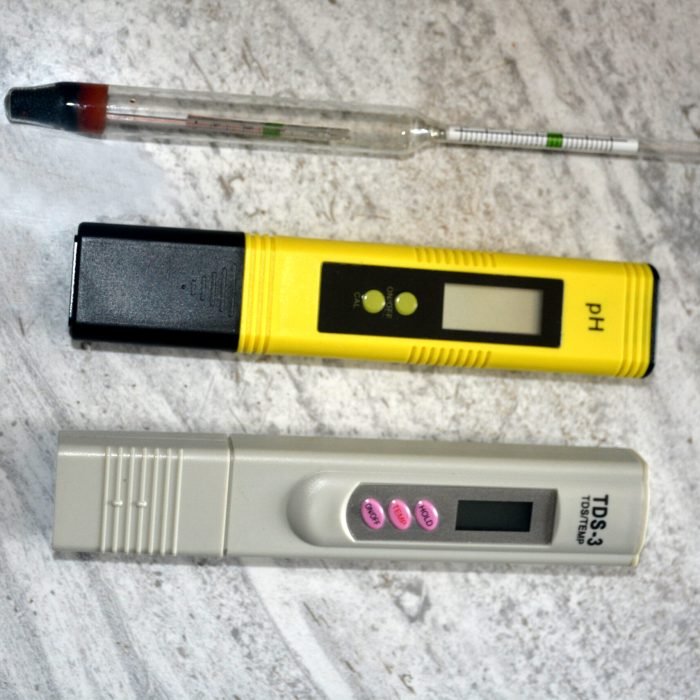
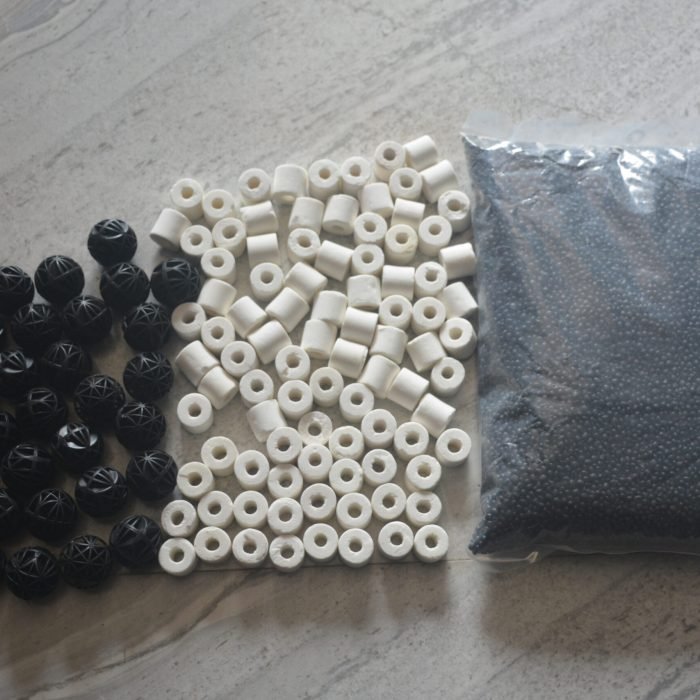
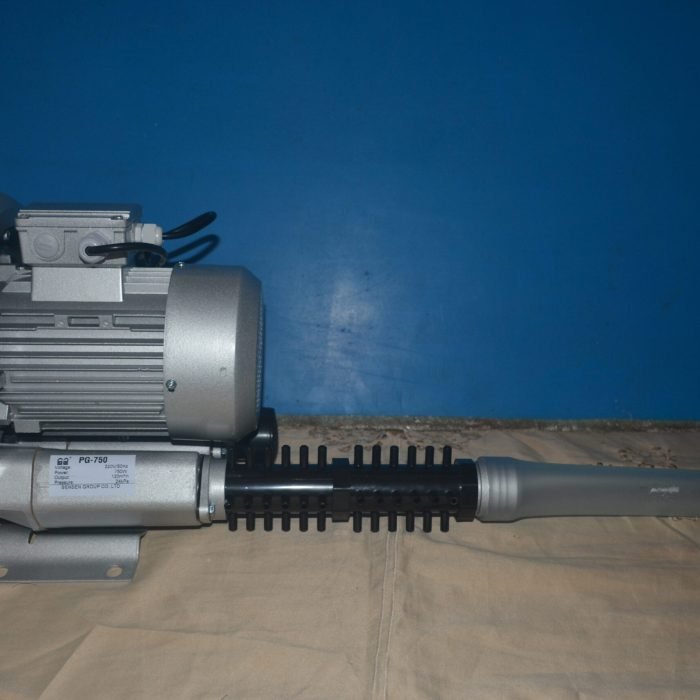
FRP Boat
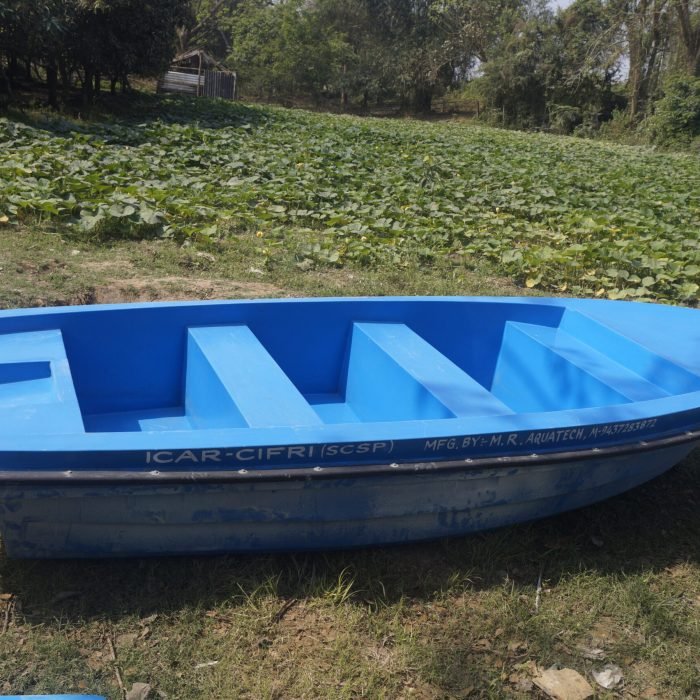
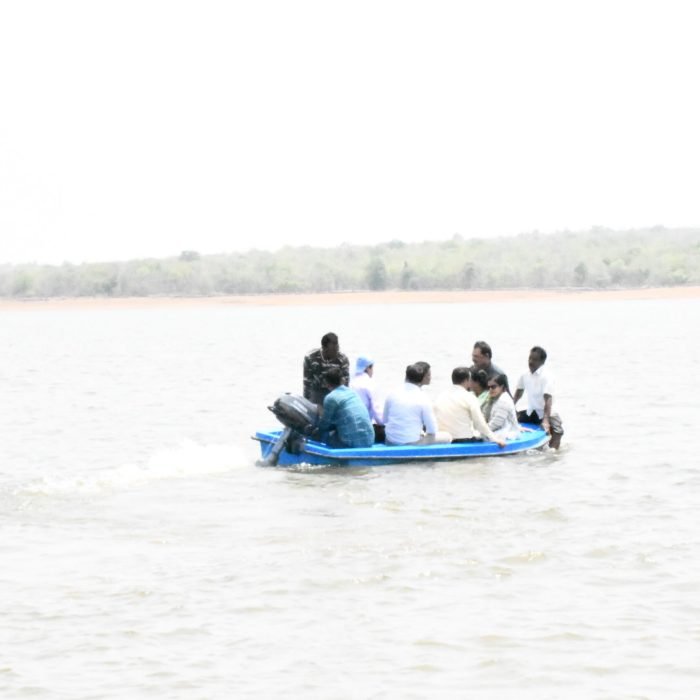
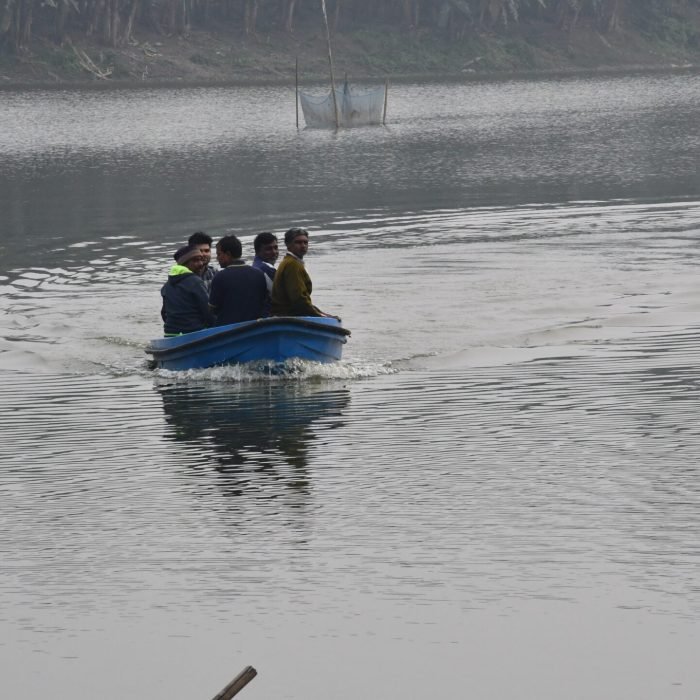
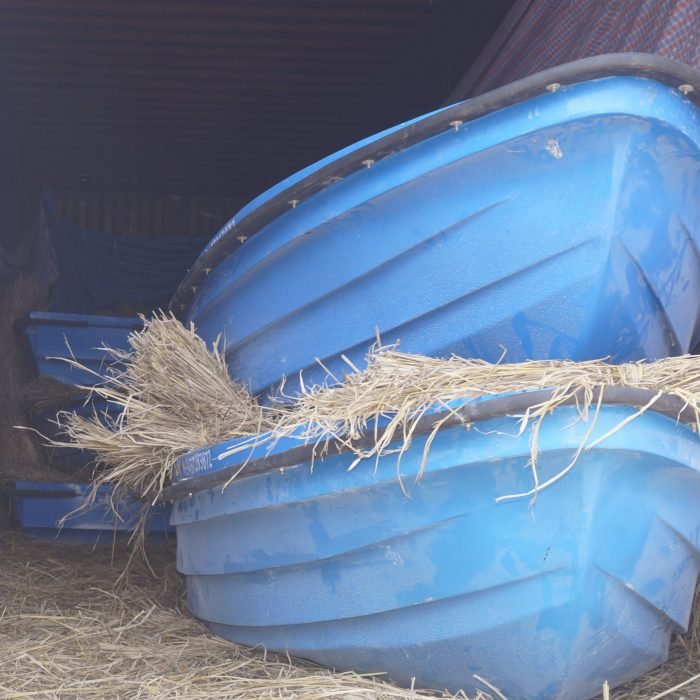
FRP Bio-Flock Tank
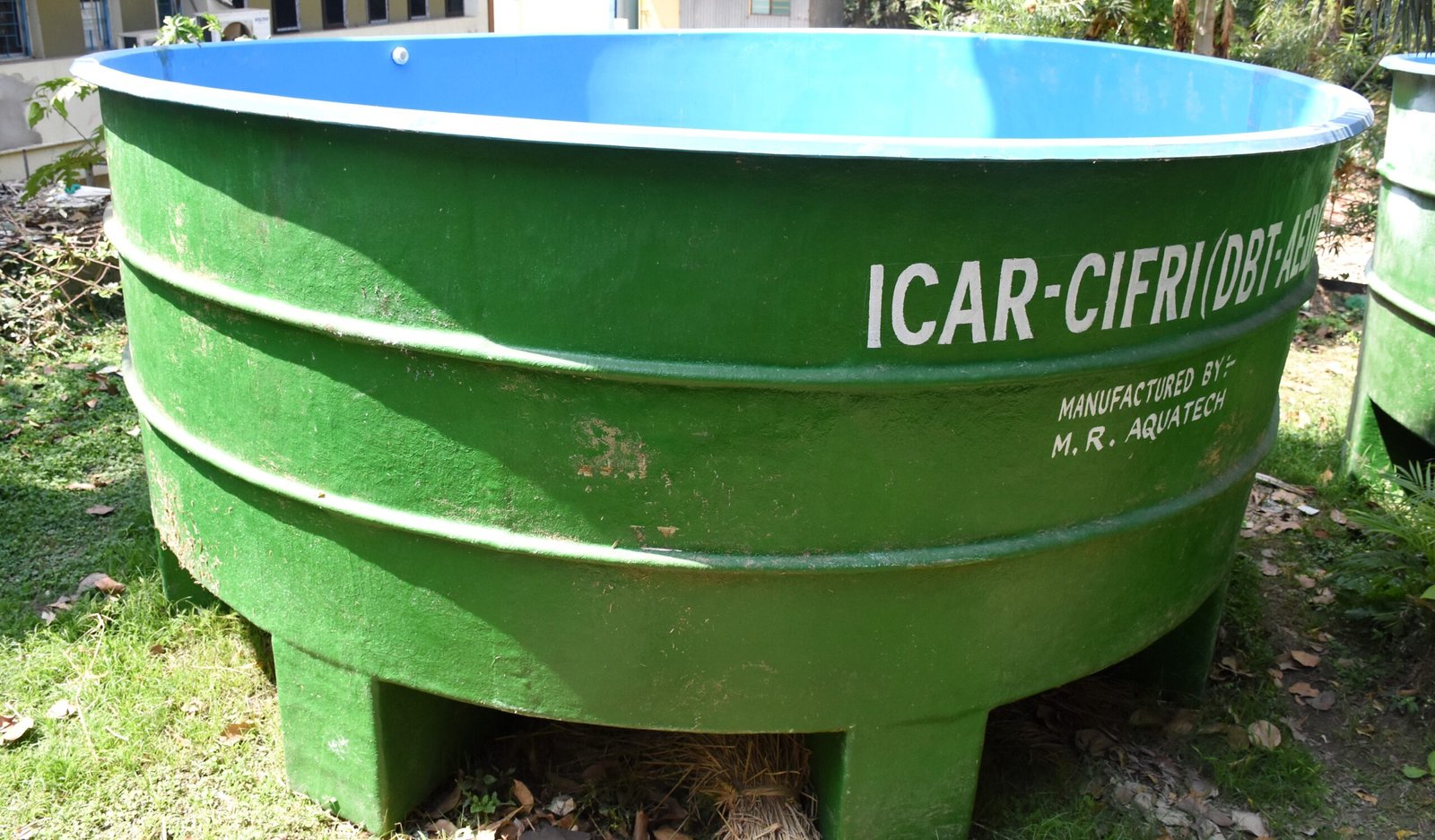
CIFA Testing Tank

FRP Breeding Pool
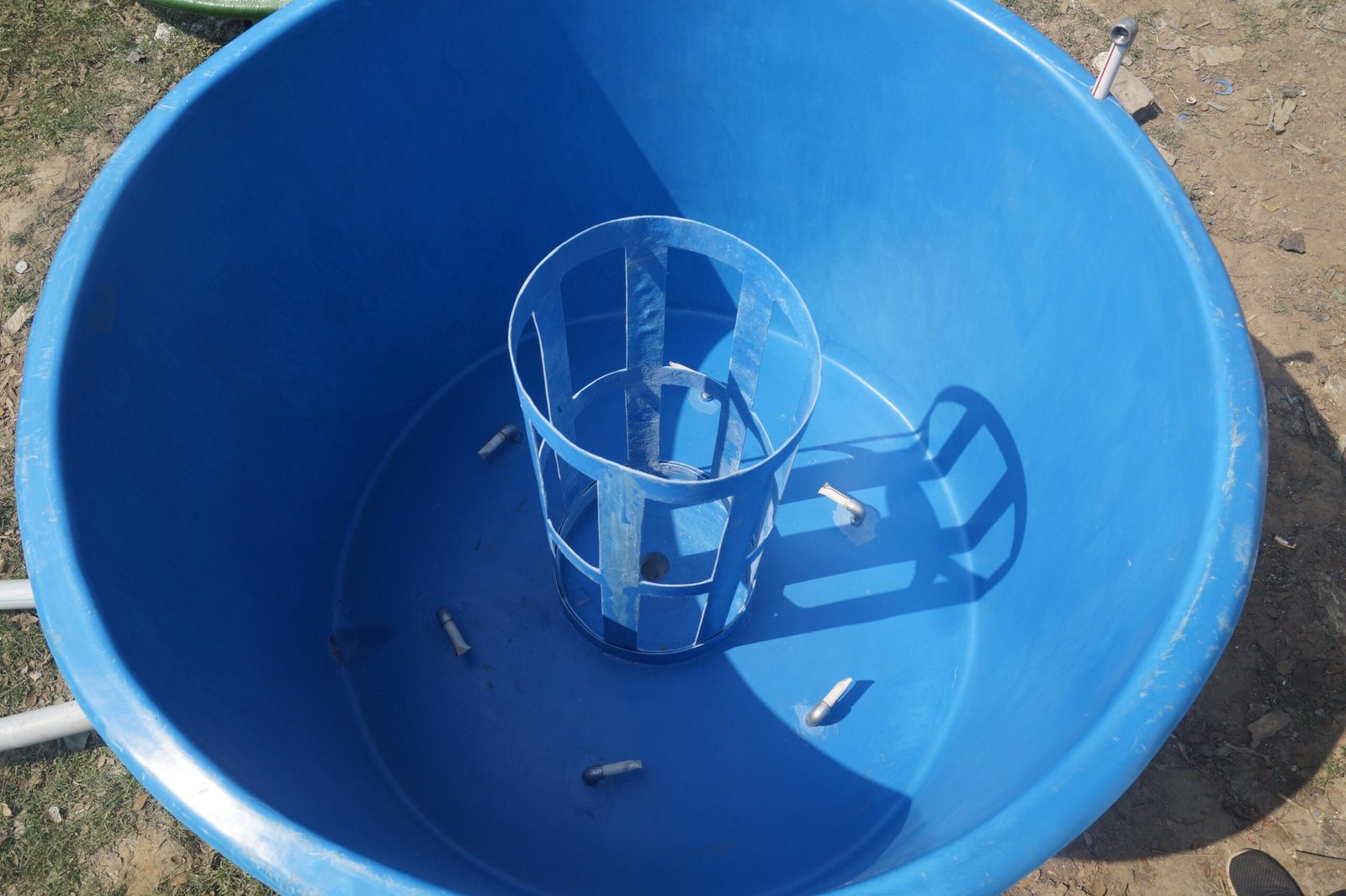
FRP ornamental tank
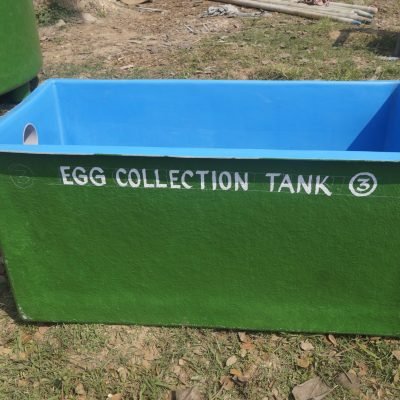
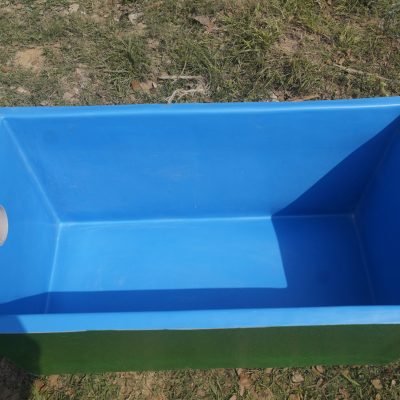
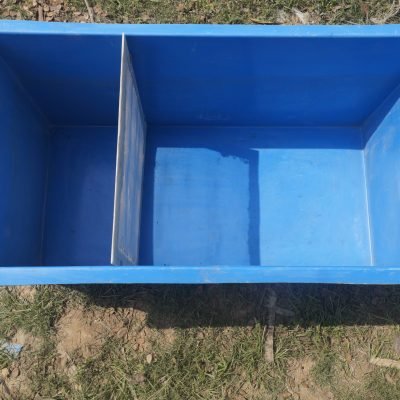
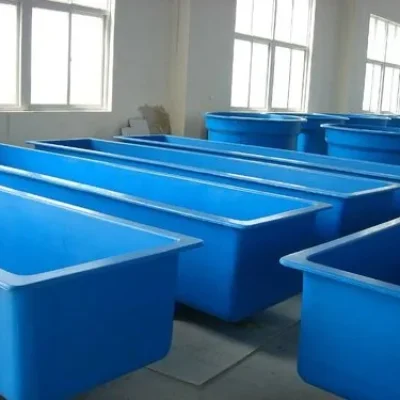
HDPE Pen Culture
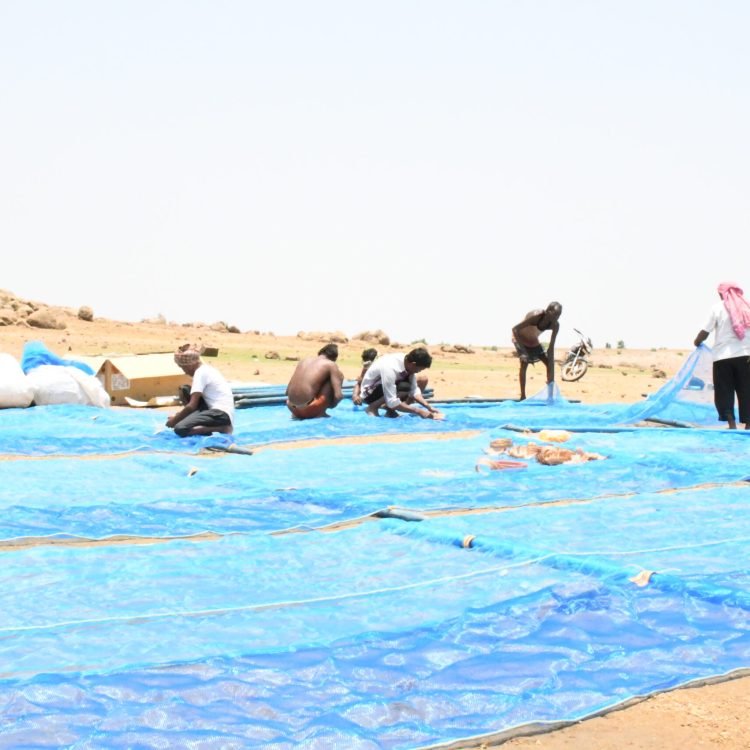
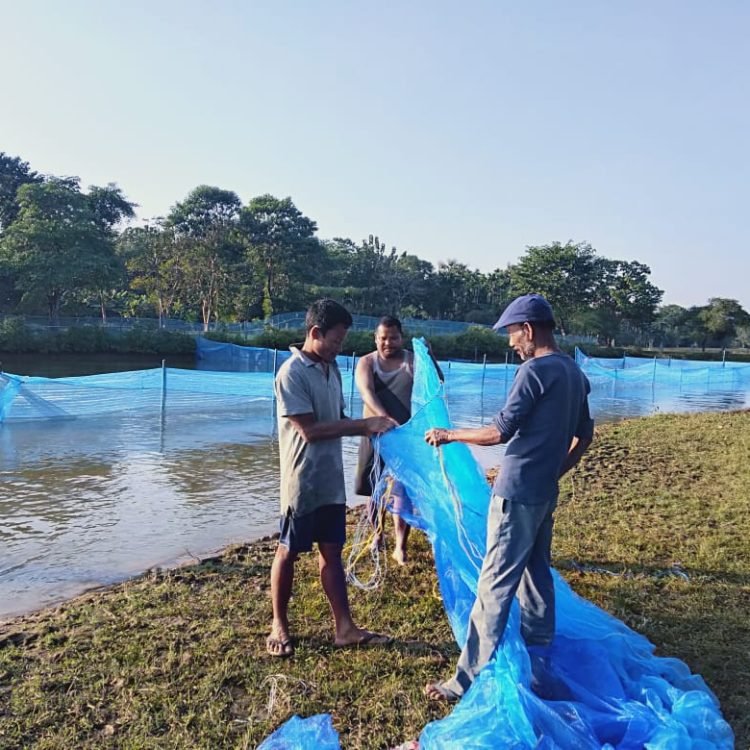

Fish breeding
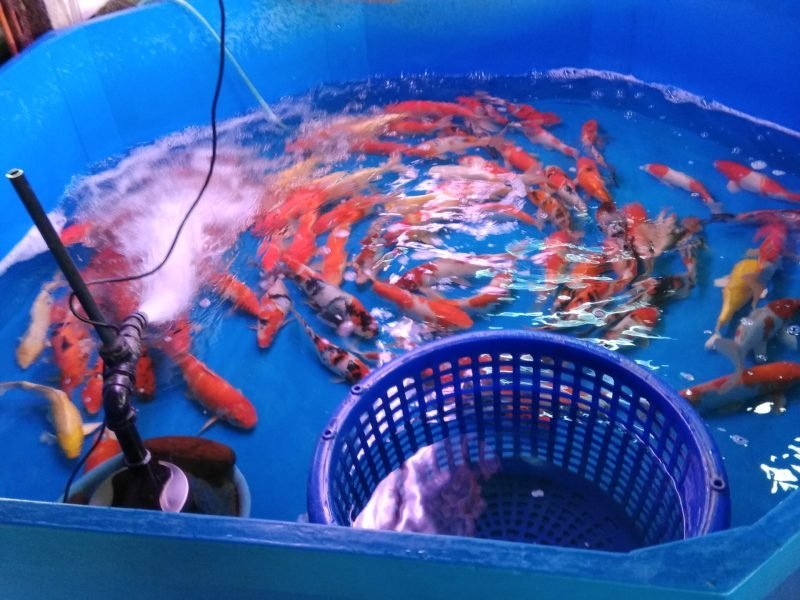
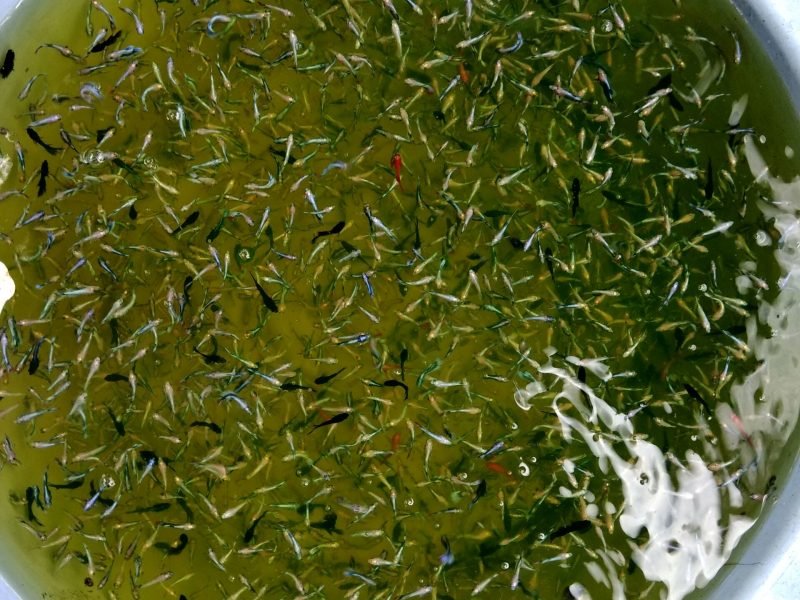
Govt. projects about to acknowledge the farmers about easy technologies and generating more employment
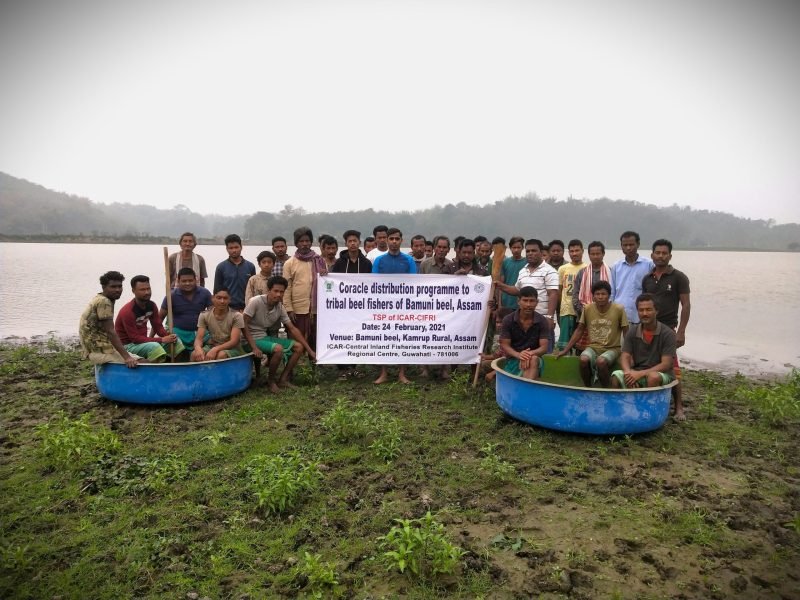

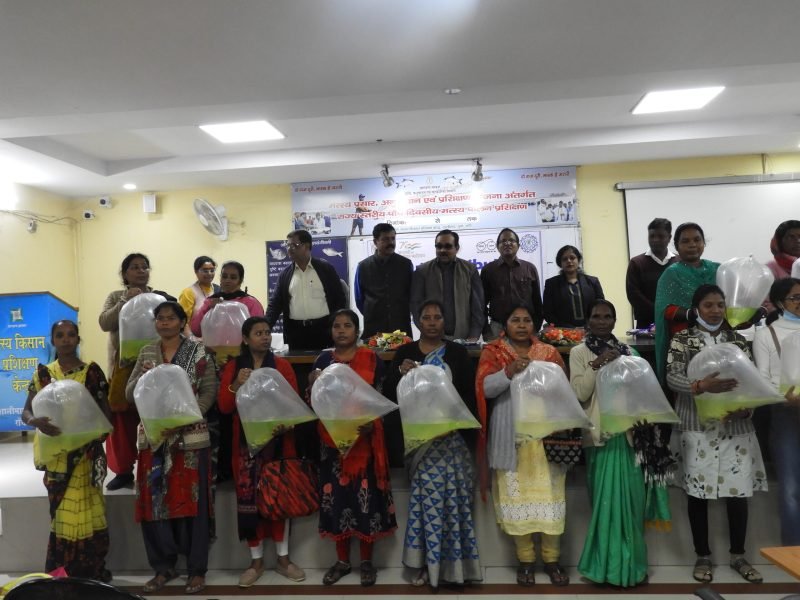
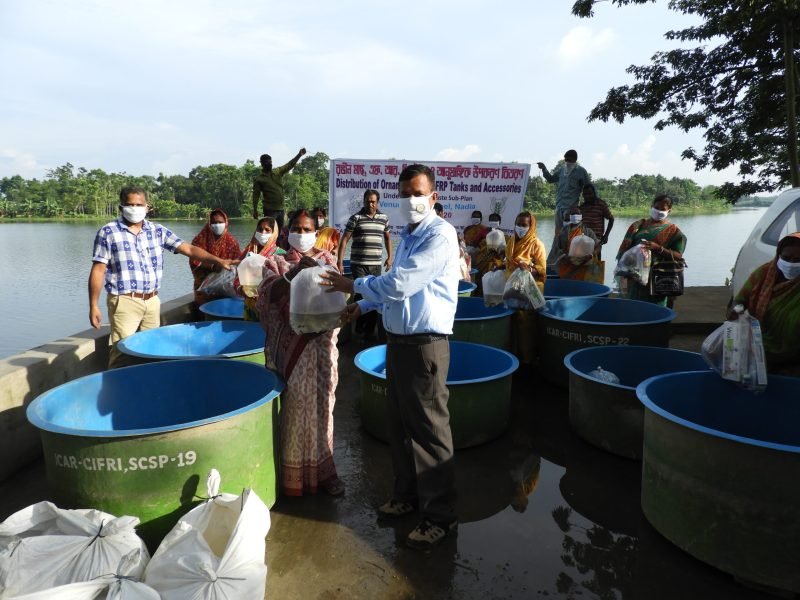
Trade fair memory
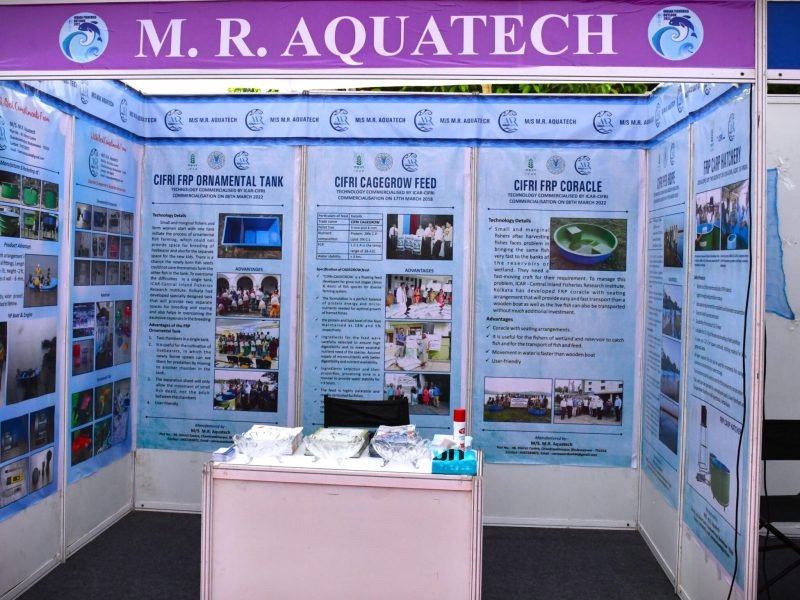
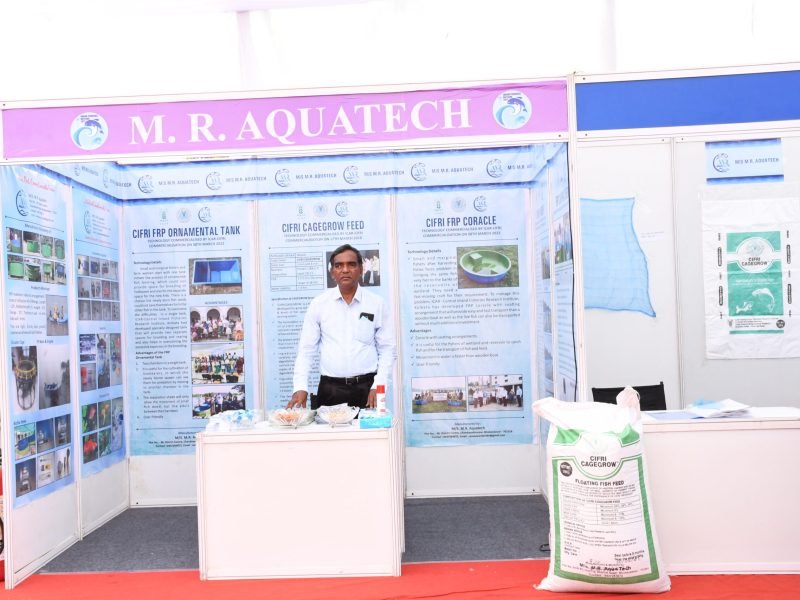
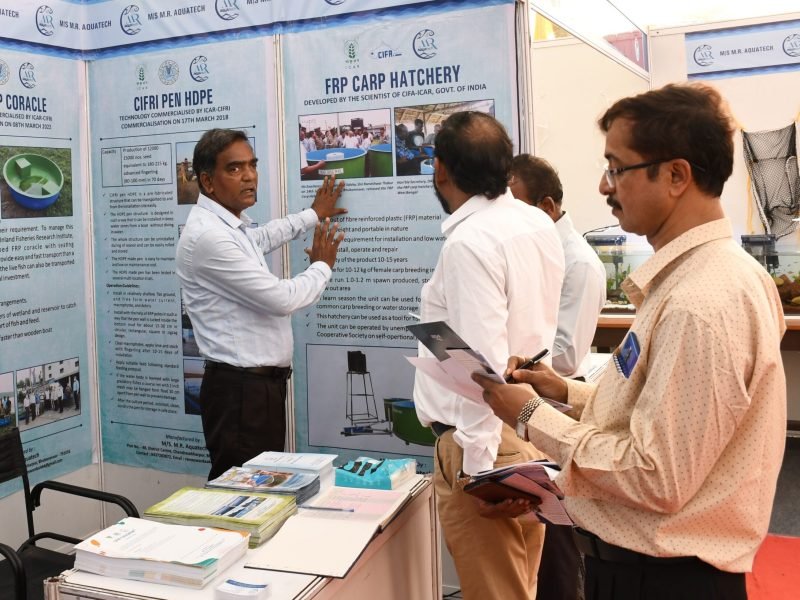
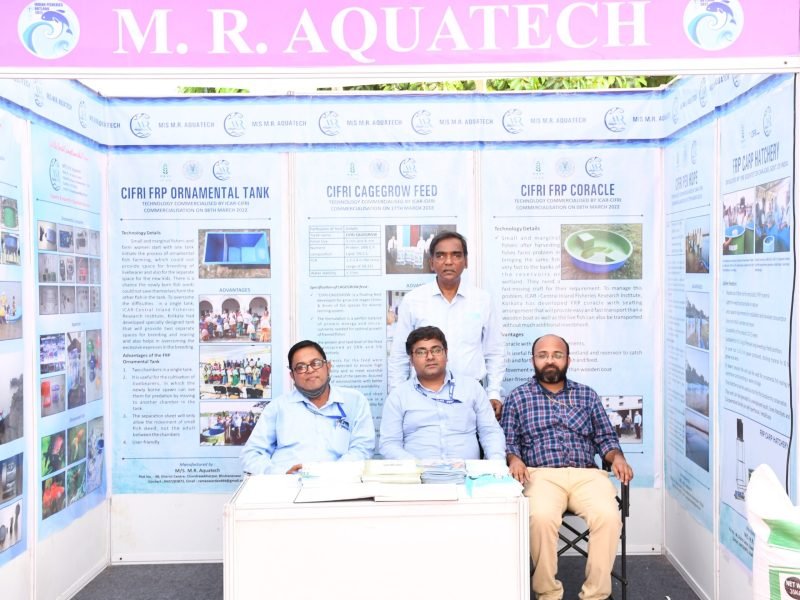
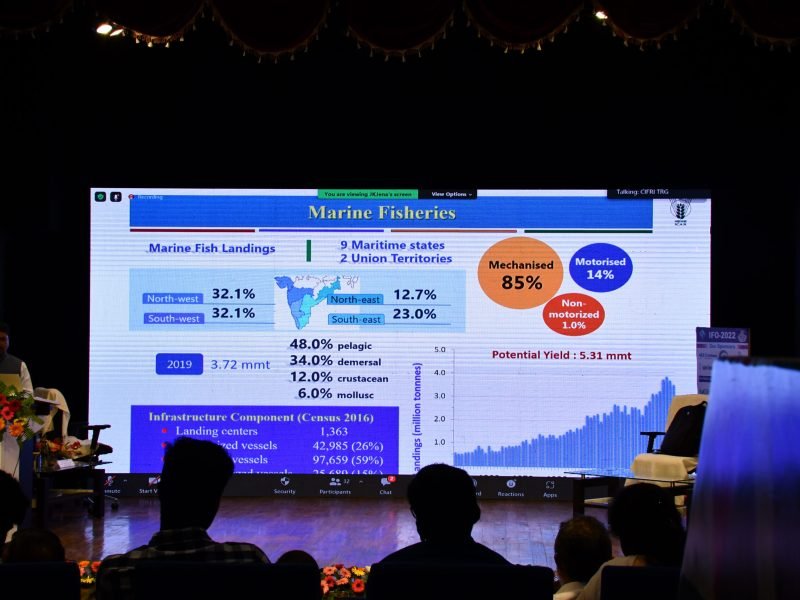

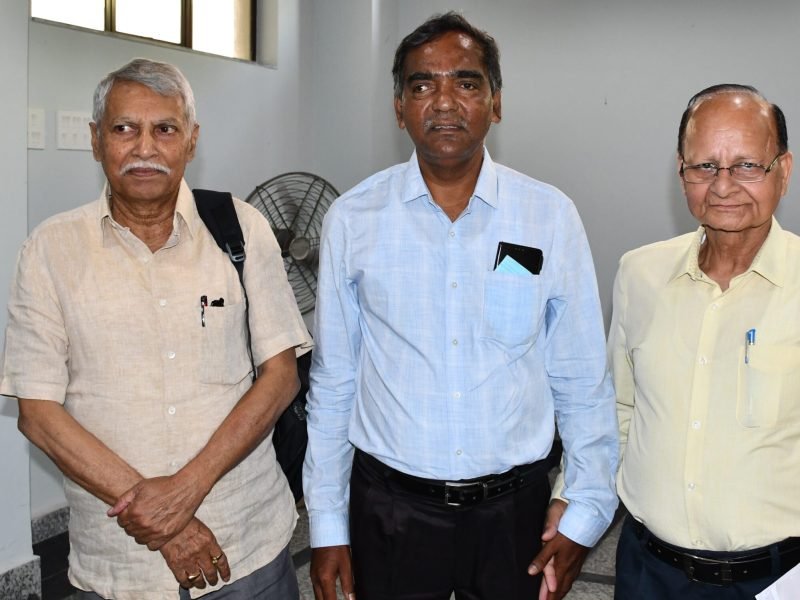
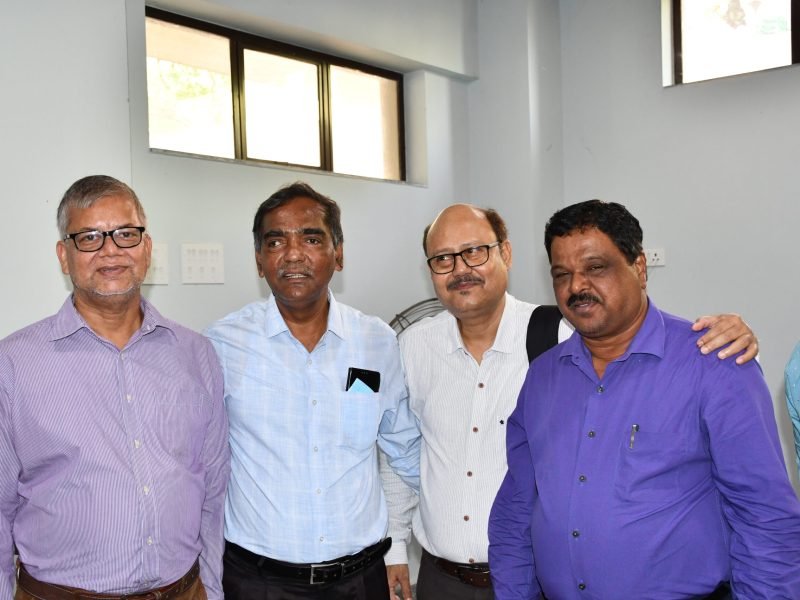
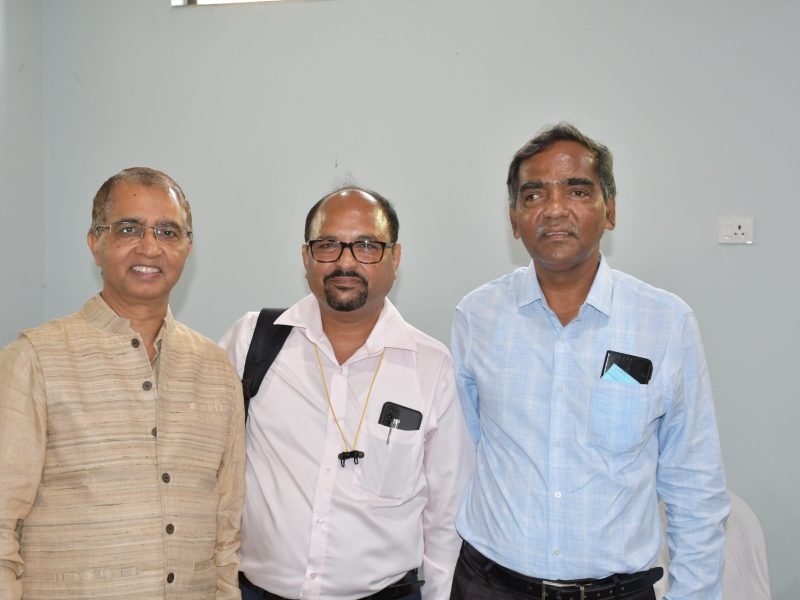

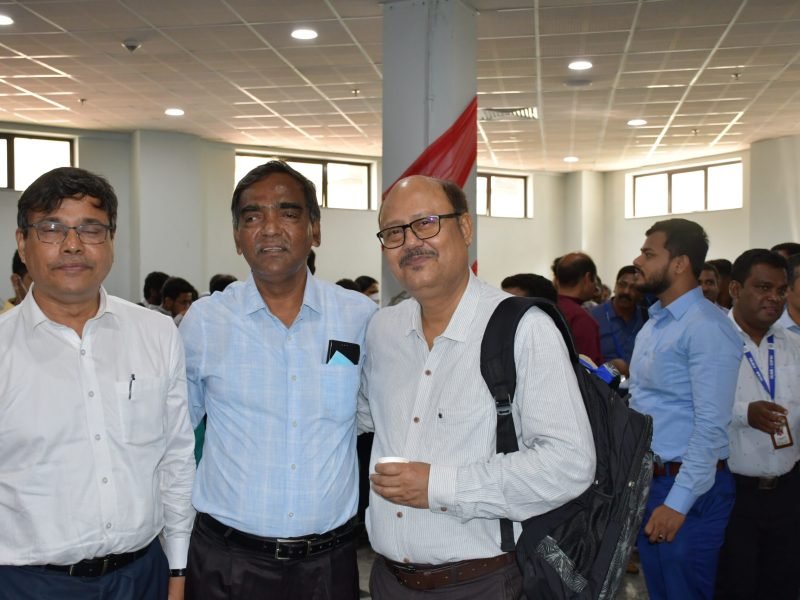
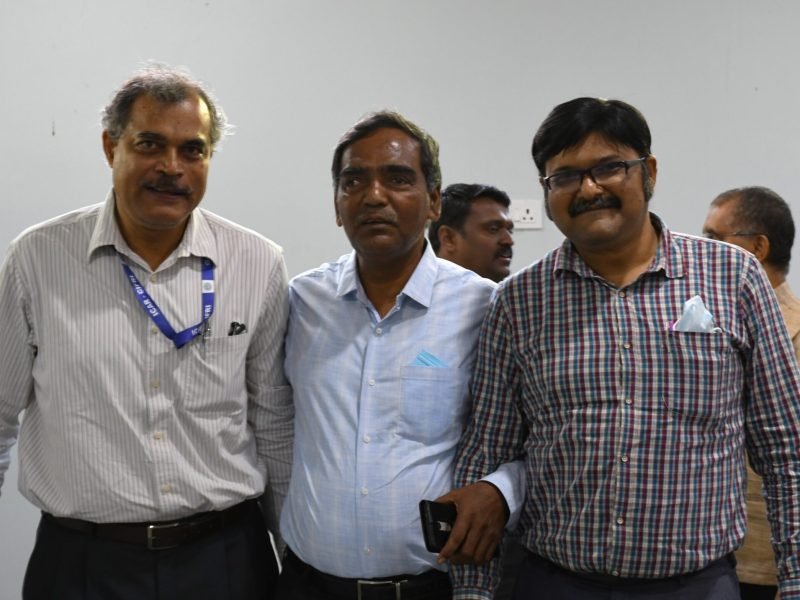

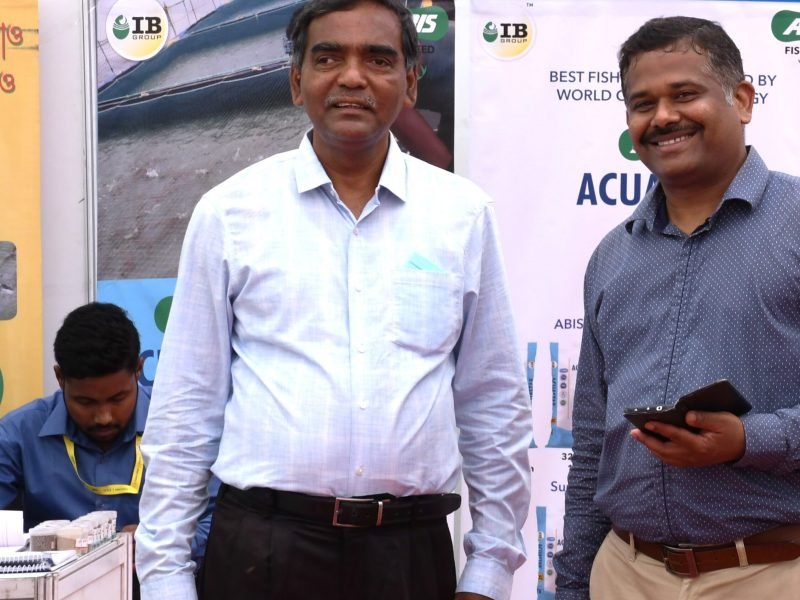
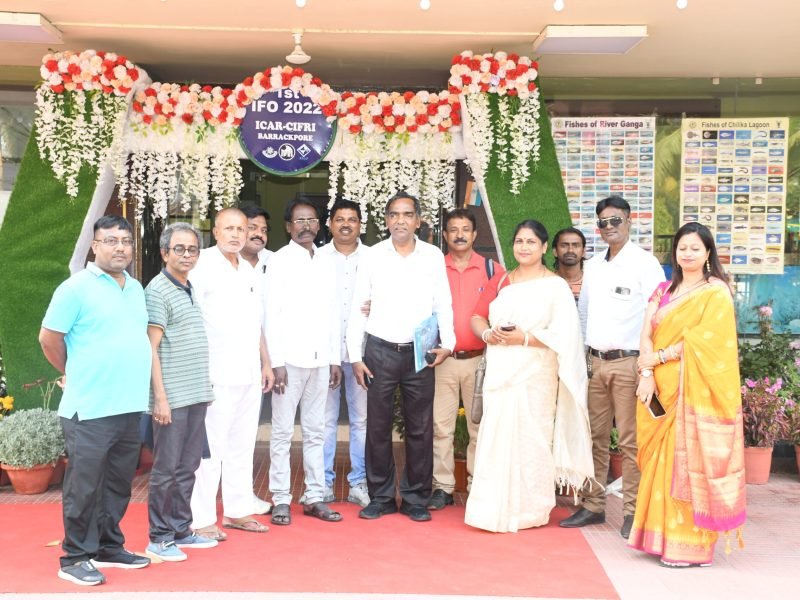
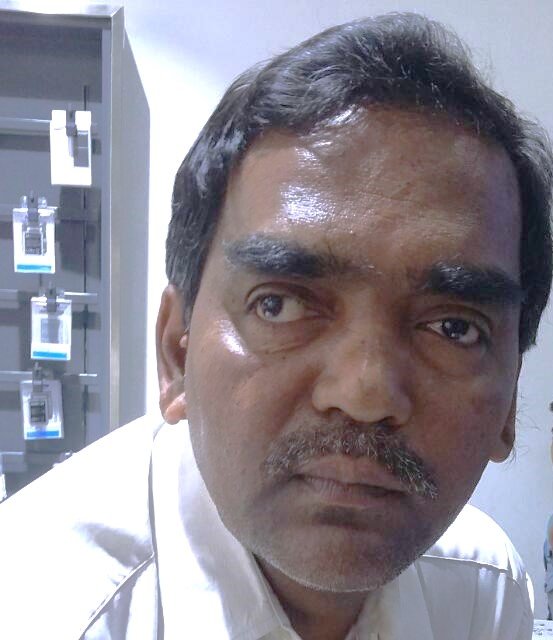
Mr. Rameswar Das
Founder & CEO at M.R. AQUATECH
Dear Valued Customers and Partners,
We extend our heartfelt gratitude to each of you for your unwavering support and trust in M.R. AQUATECH. As a leading manufacturer of FRP products catering to the aquaculture industry, we are profoundly grateful for the opportunity to serve you and contribute to the advancement of this vital sector.
Your continued patronage inspires us to push the boundaries of innovation, ensuring that our products meet and exceed your expectations in terms of quality, reliability, and sustainability. We are deeply honored to have collaborated with esteemed institutions such as ICAR-CIFA, ICAR-CIFRI, and ICAR-NBFGR under the Government of India, further cementing our commitment to excellence and driving positive change in the aquaculture domain.
It is through your valuable feedback and collaboration that we have been able to refine our offerings and tailor our solutions to your specific needs. Your trust in our capabilities fuels our passion to deliver exceptional service and uphold the highest standards of craftsmanship in every product we deliver.
As we look ahead, we remain dedicated to fostering enduring partnerships and advancing the boundaries of aquaculture technology. Together, we envision a future where sustainable practices and innovative solutions drive prosperity and growth for all stakeholders involved.
Once again, thank you for choosing M.R. AQUATECH as your trusted partner. We are truly grateful for the opportunity to serve you and look forward to continuing this journey together.
Contact With Us Now
Write Us a Message
Dear Valued Customer,
Thank you for taking the time to share your thoughts with us. Your feedback is incredibly important and helps us continually improve our products and services. We are grateful for your support and look forward to serving you better in the future.
Warm regards,
M.R. AQUATECH

